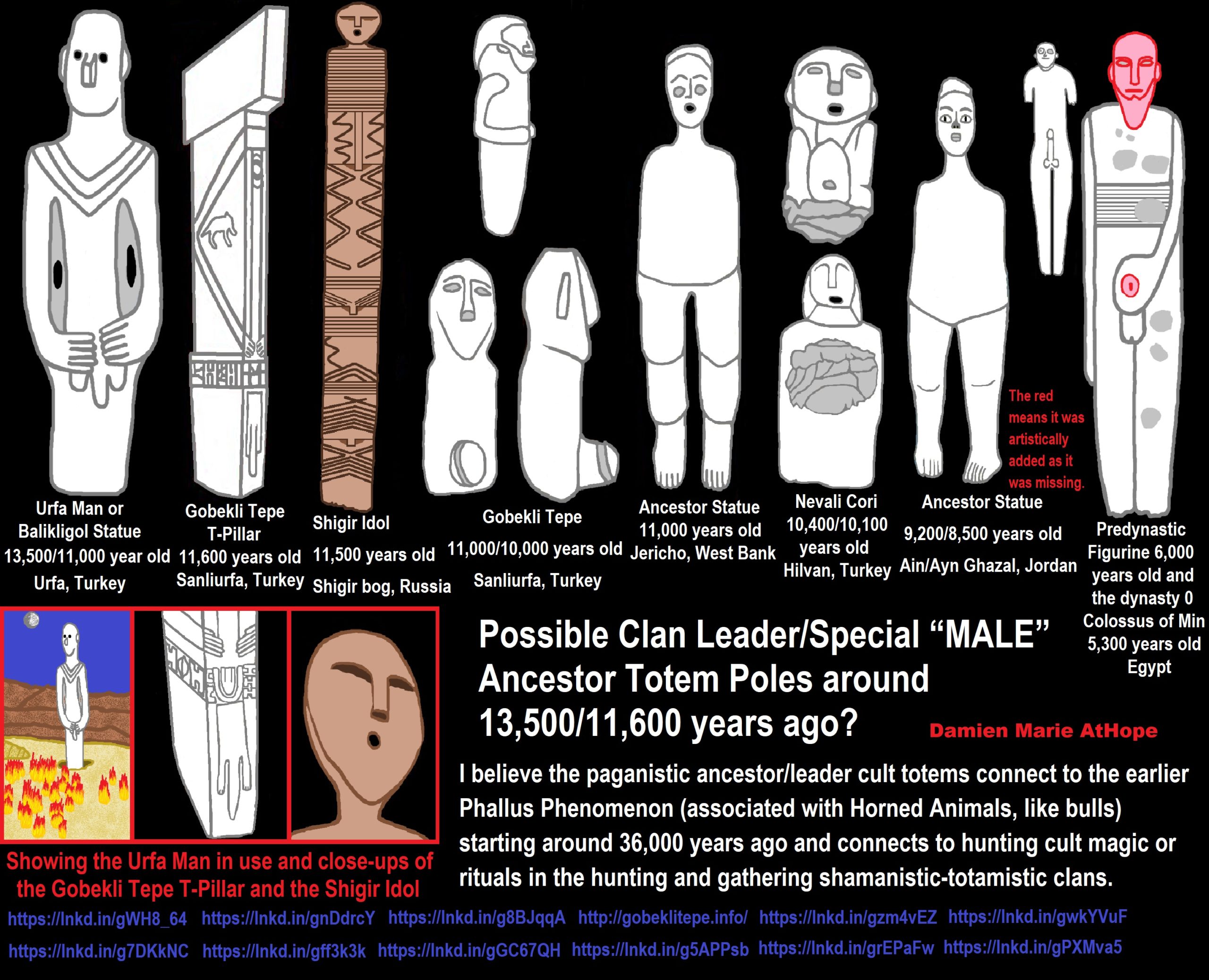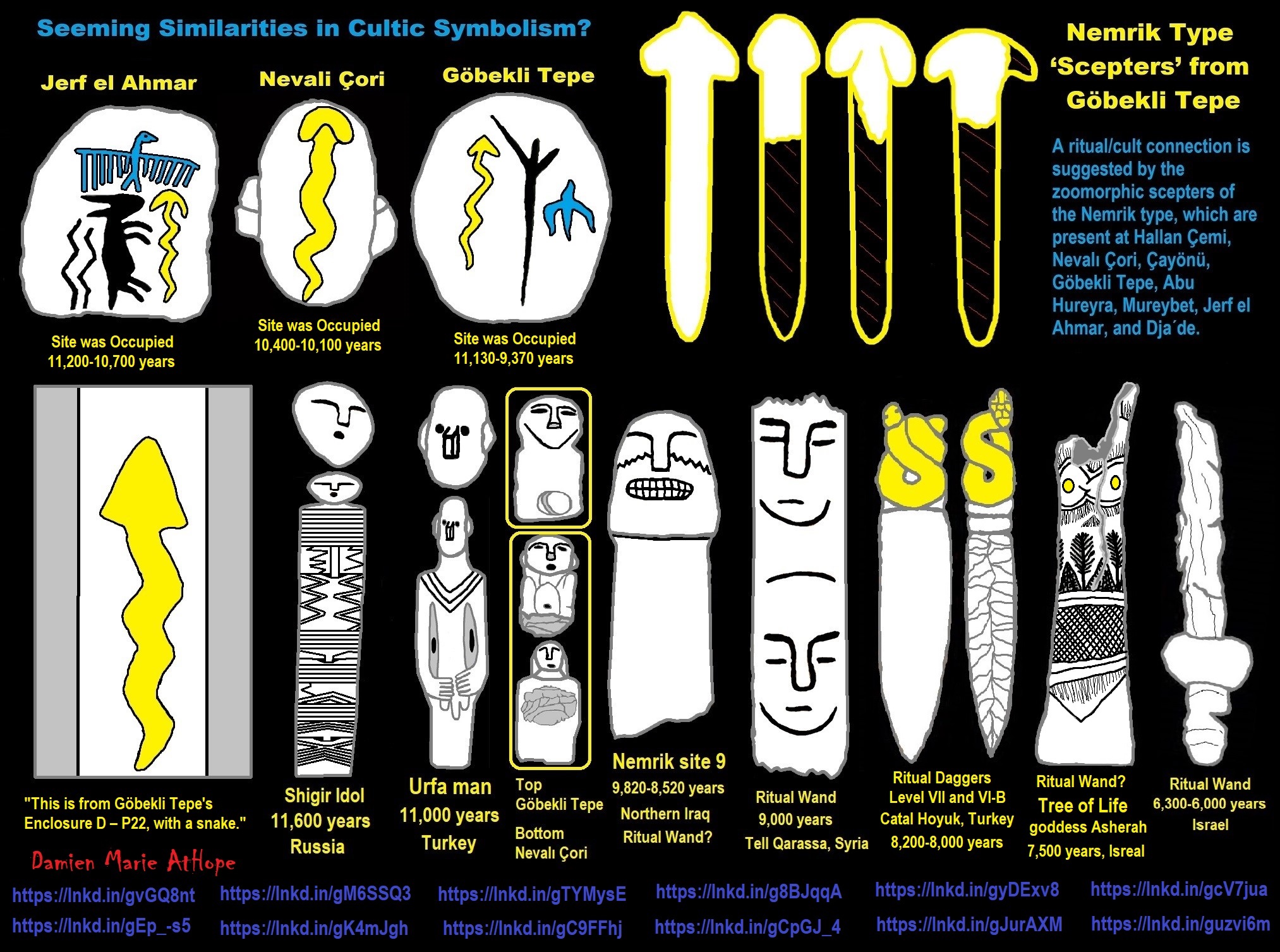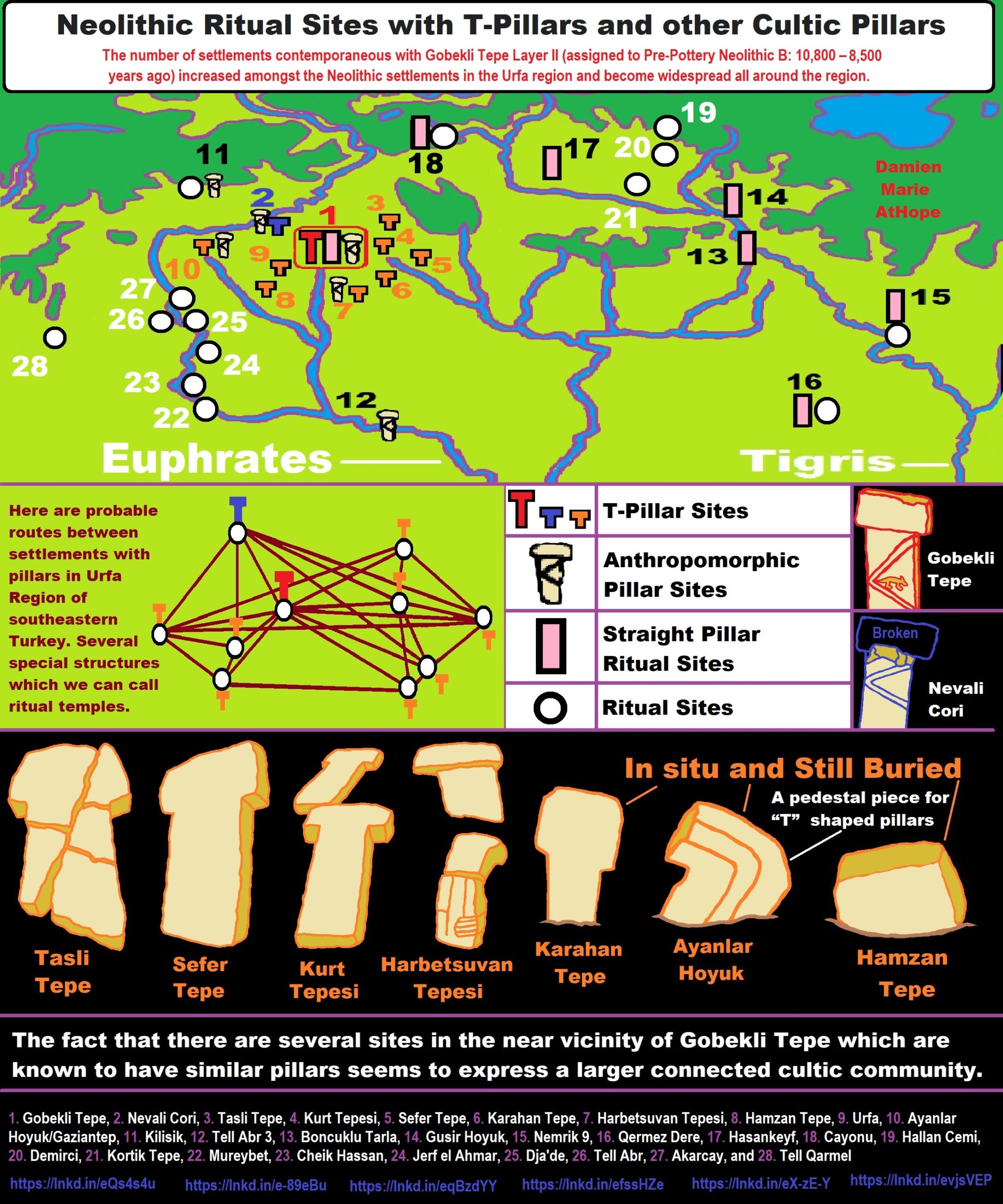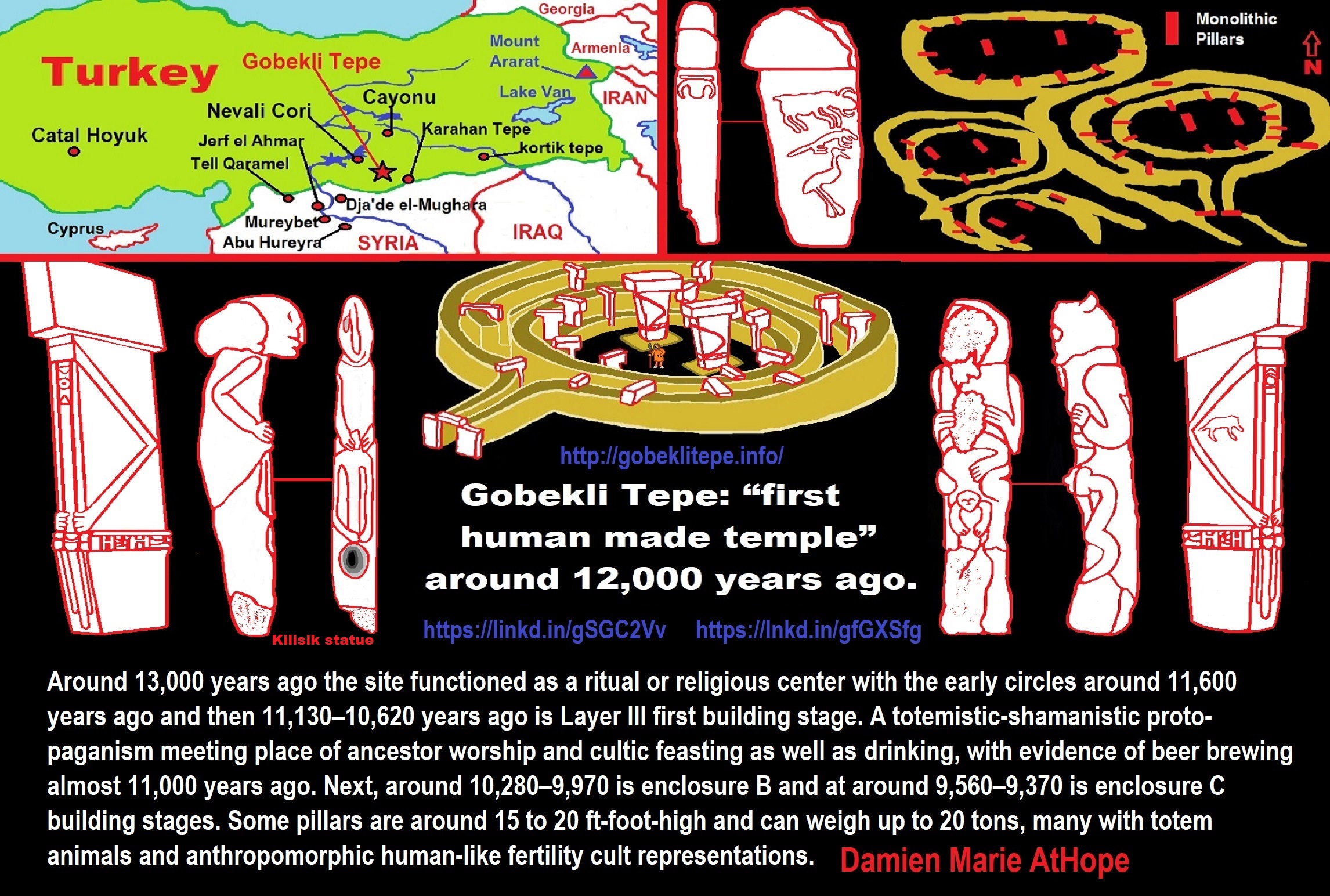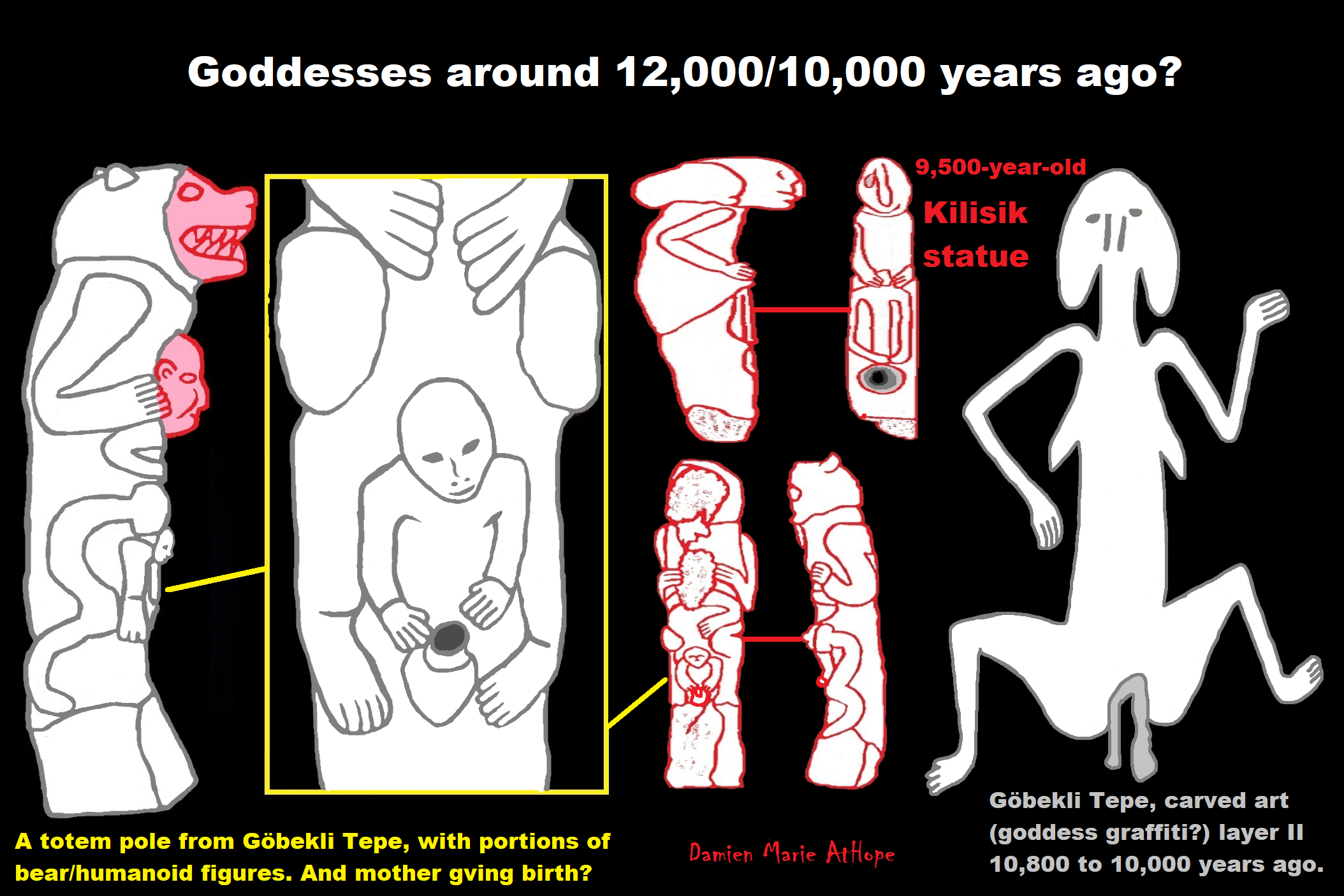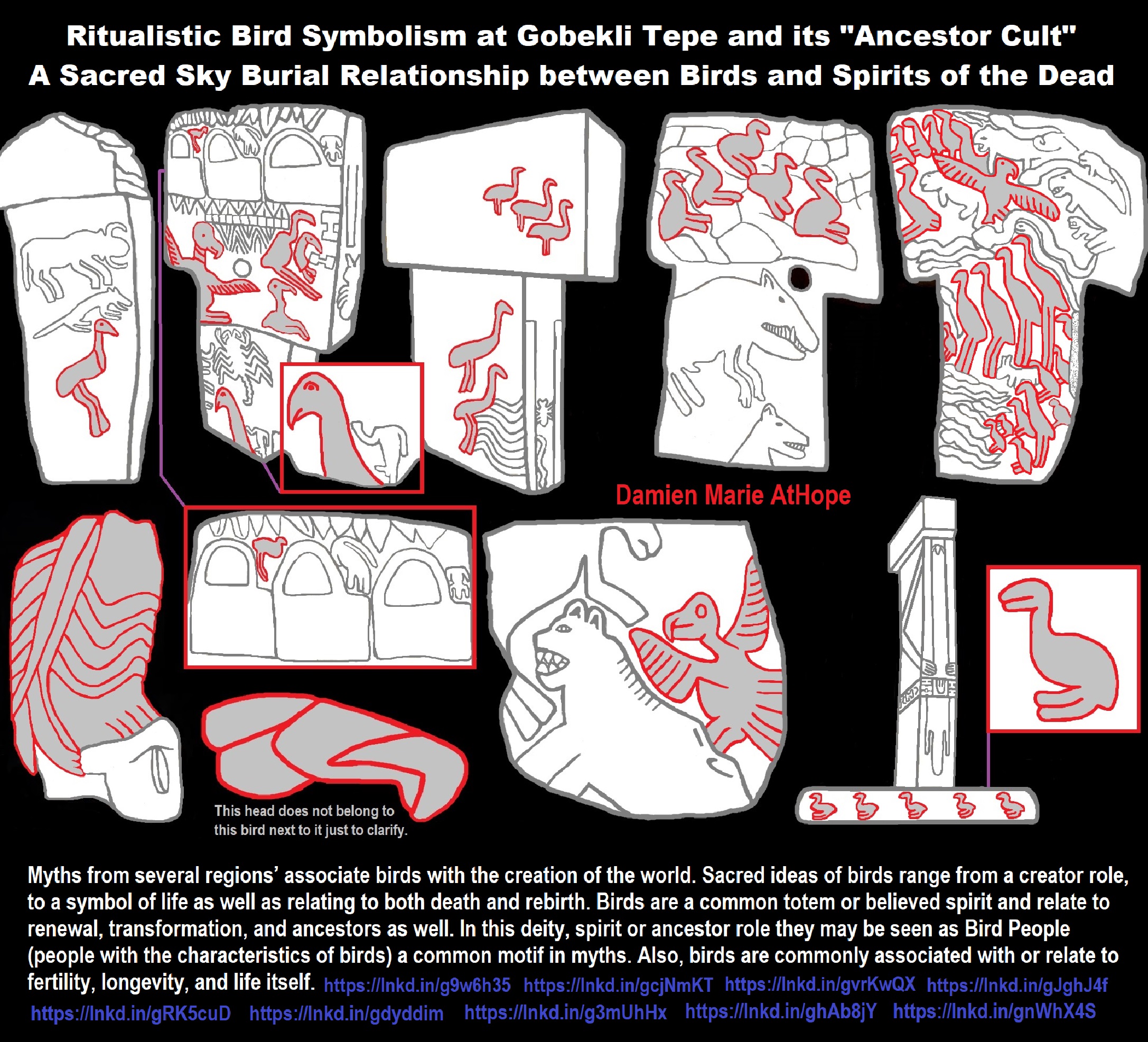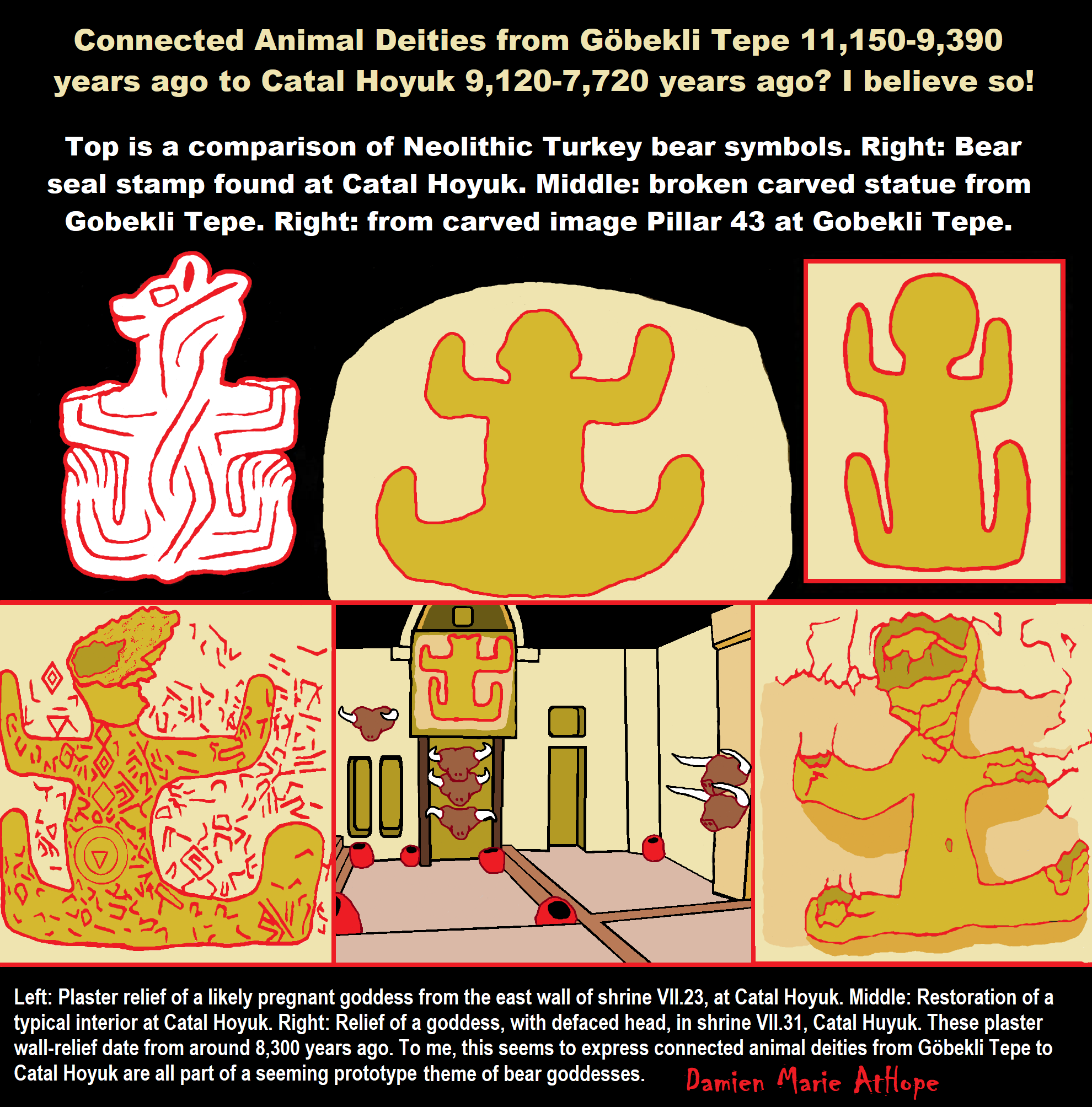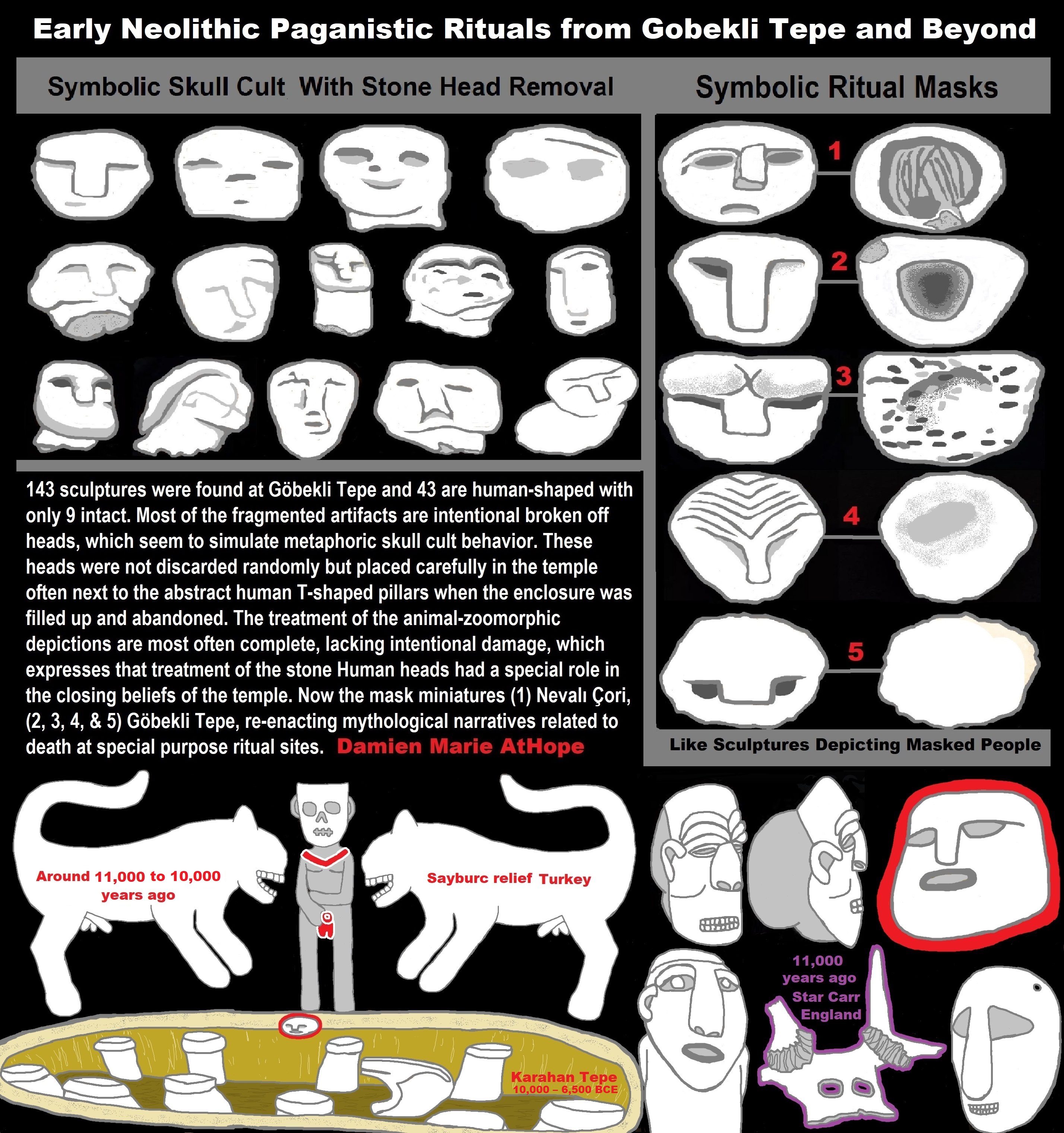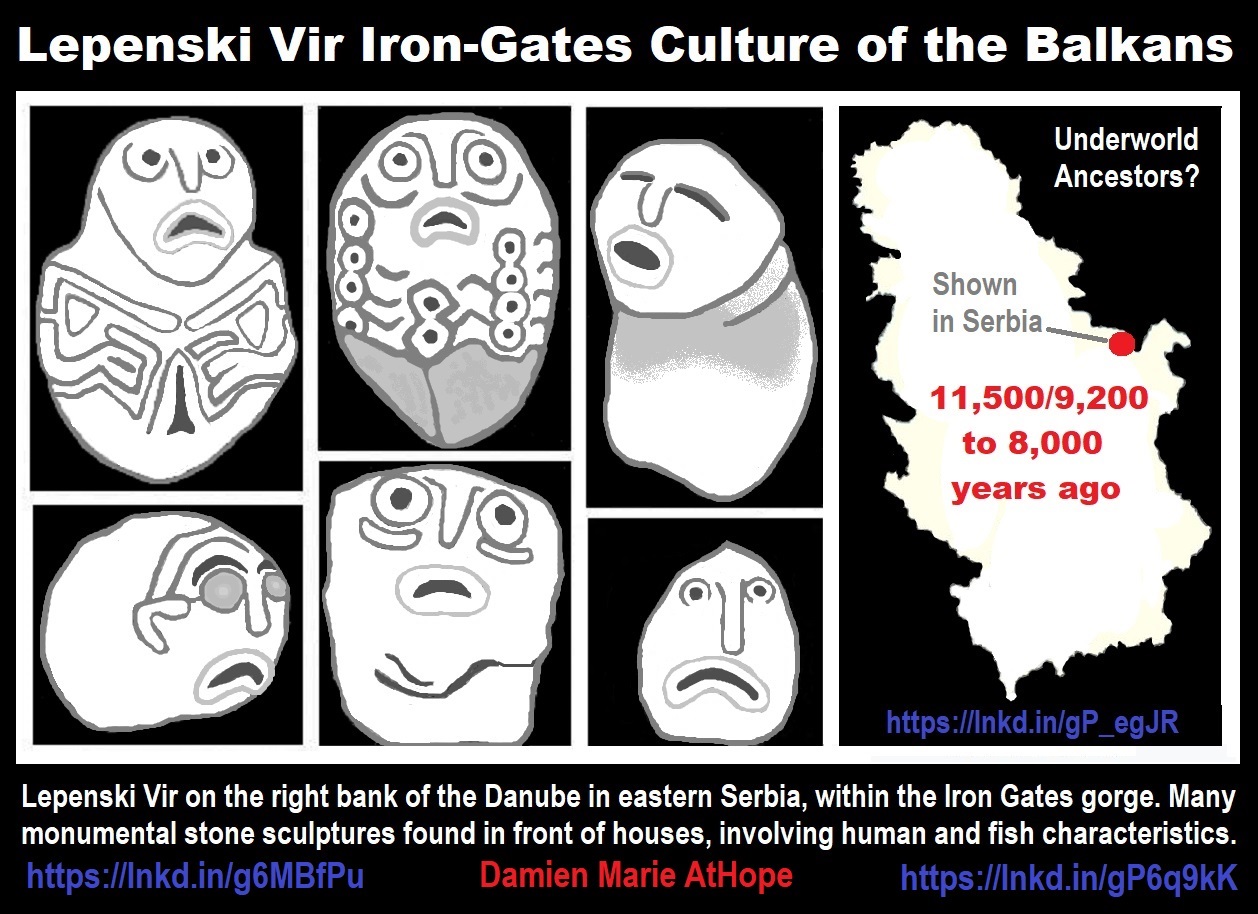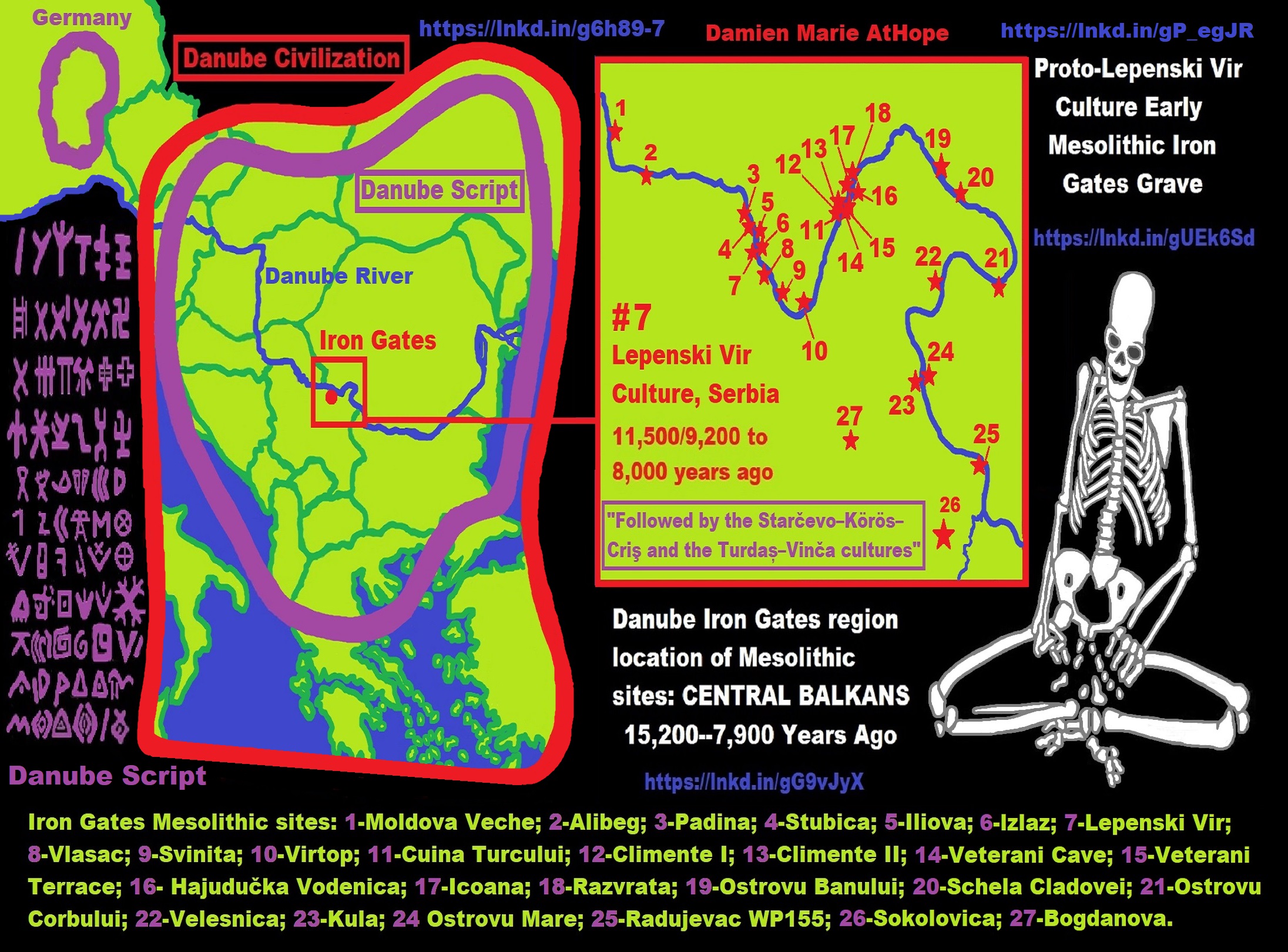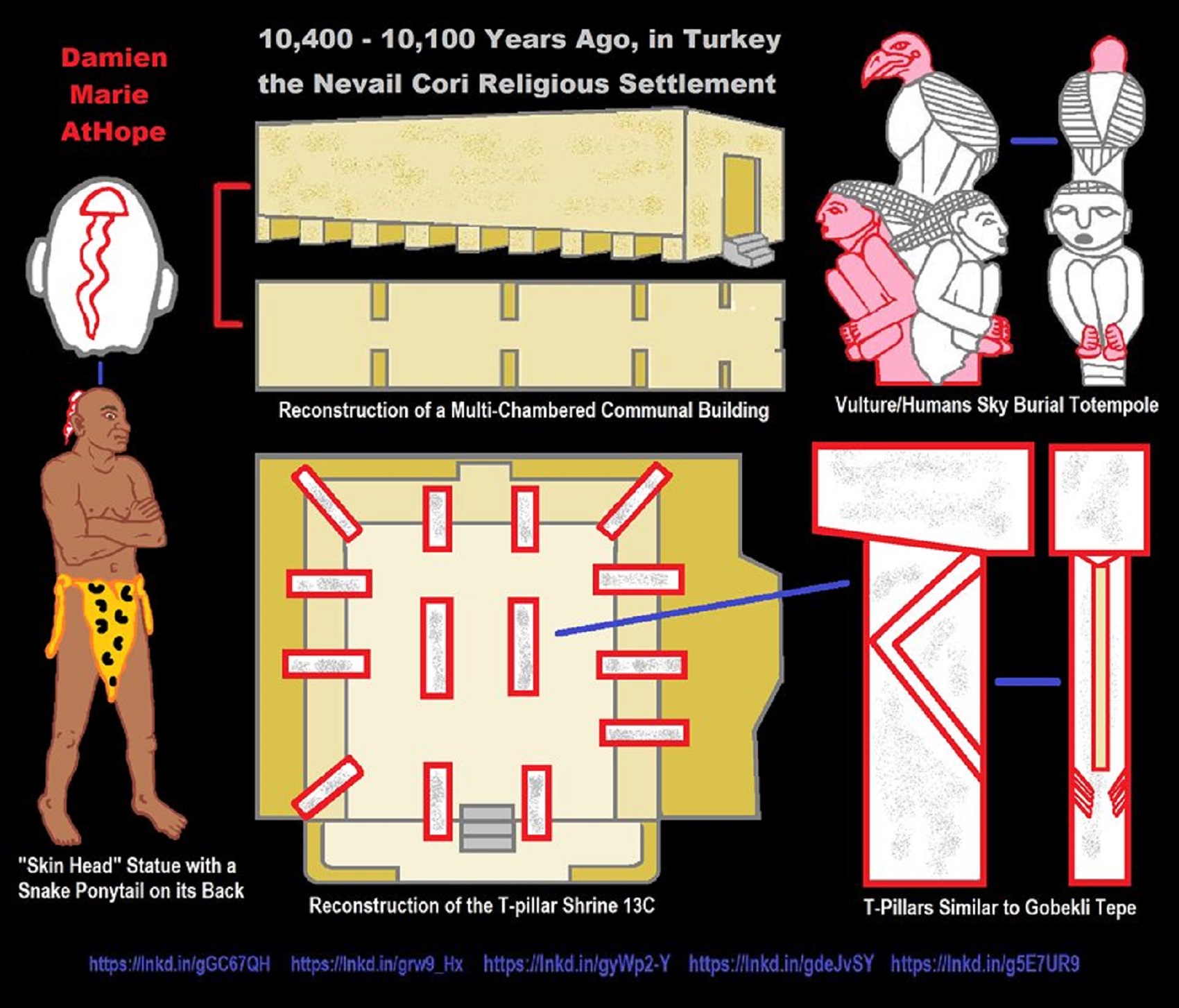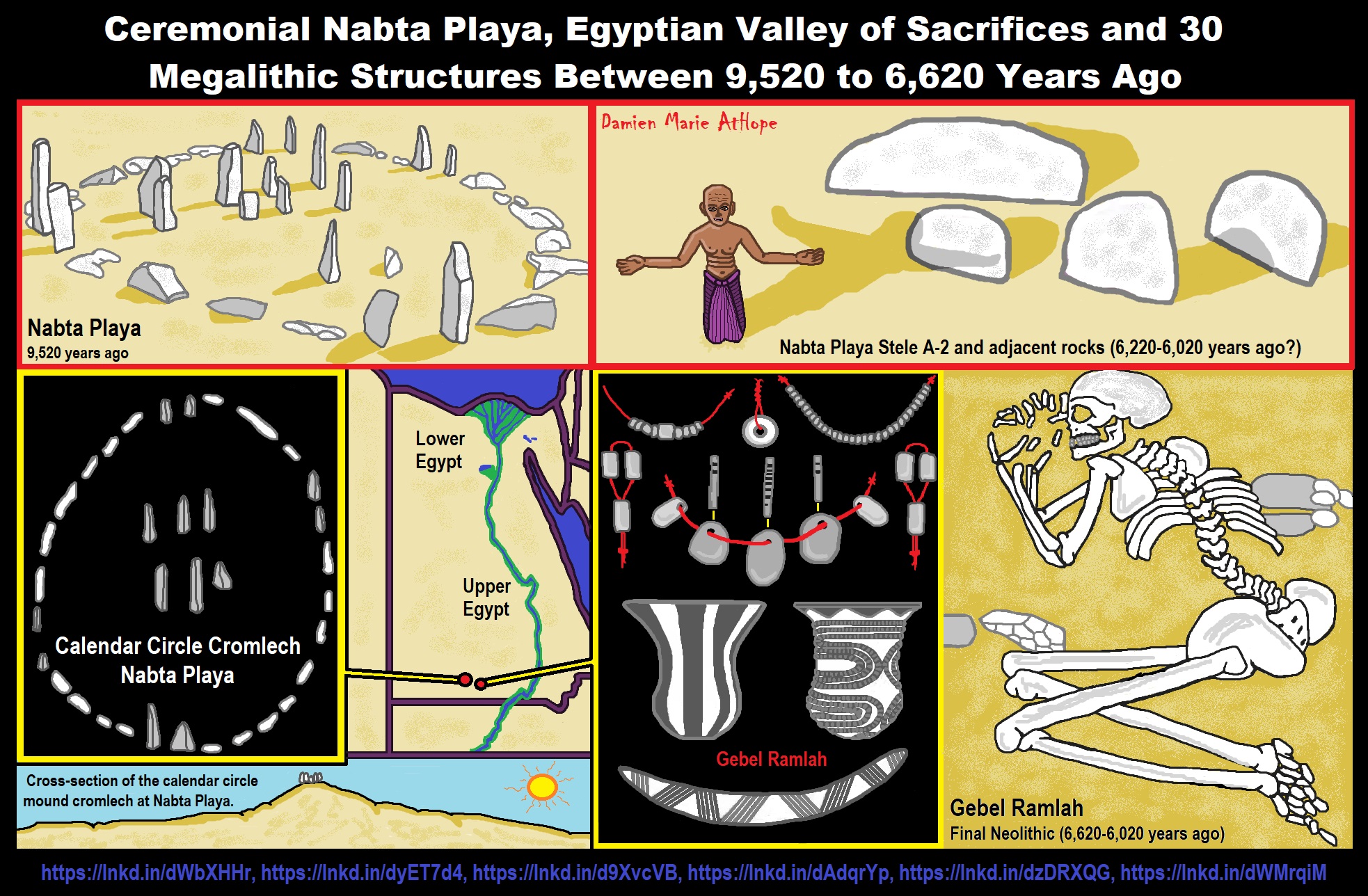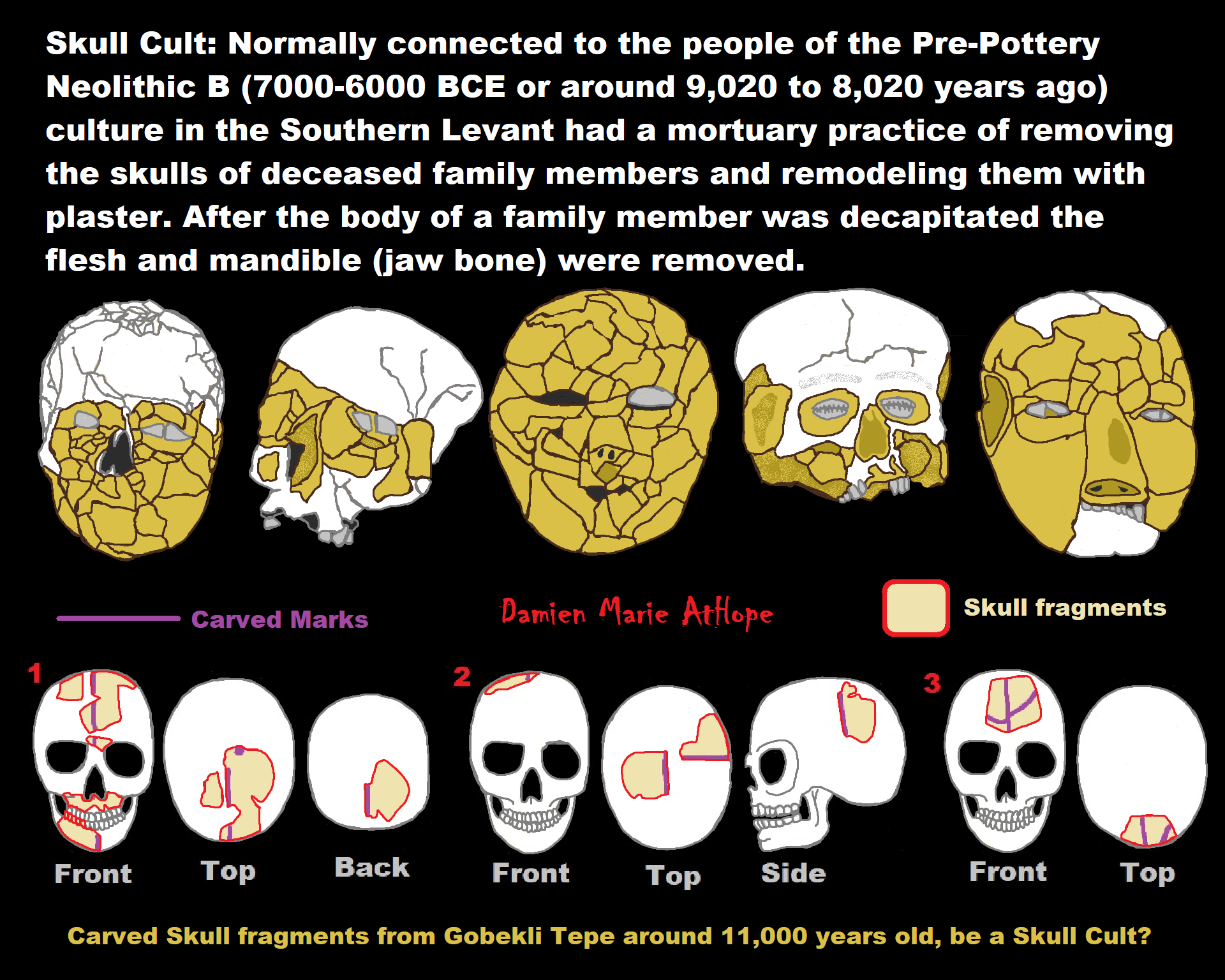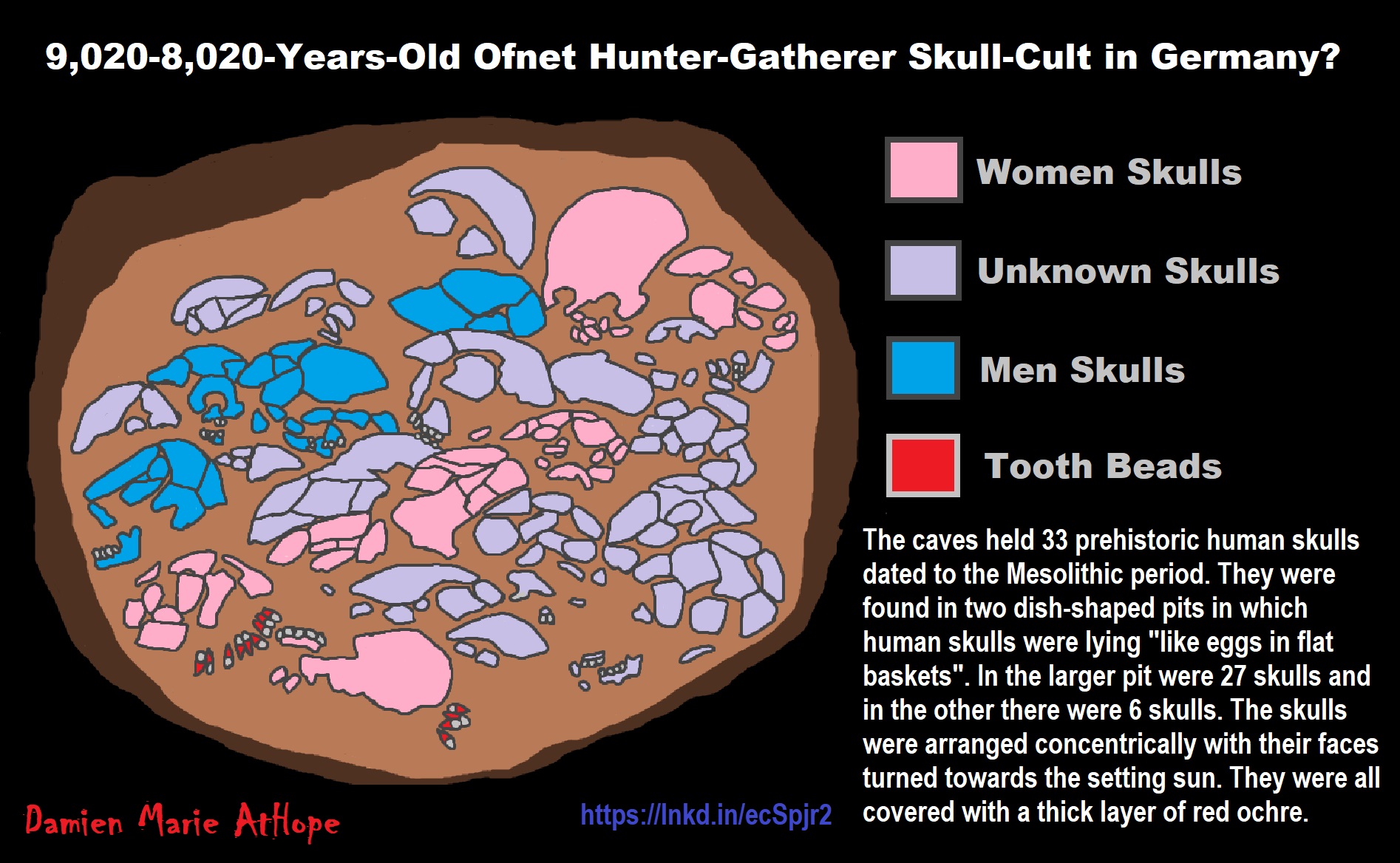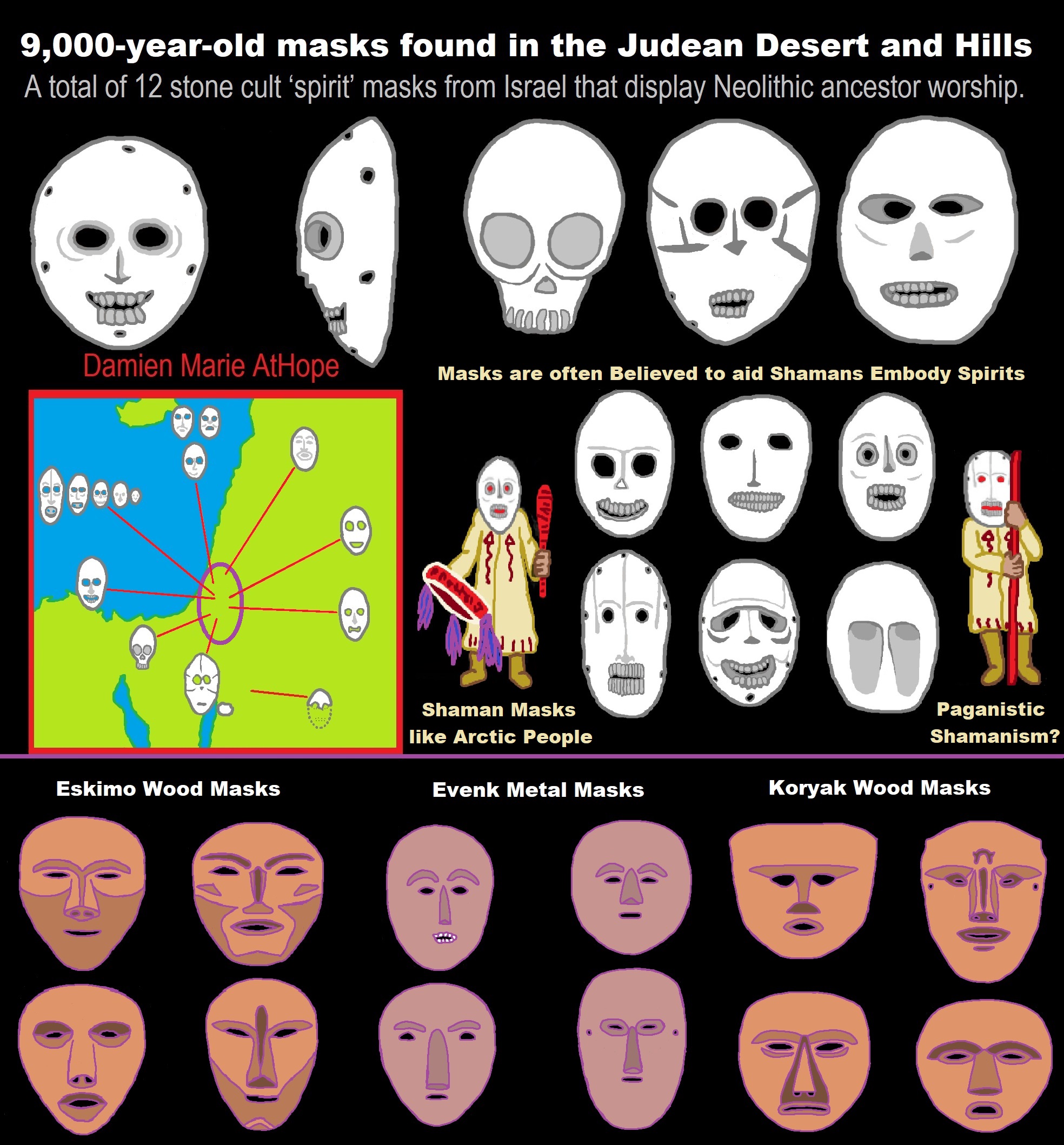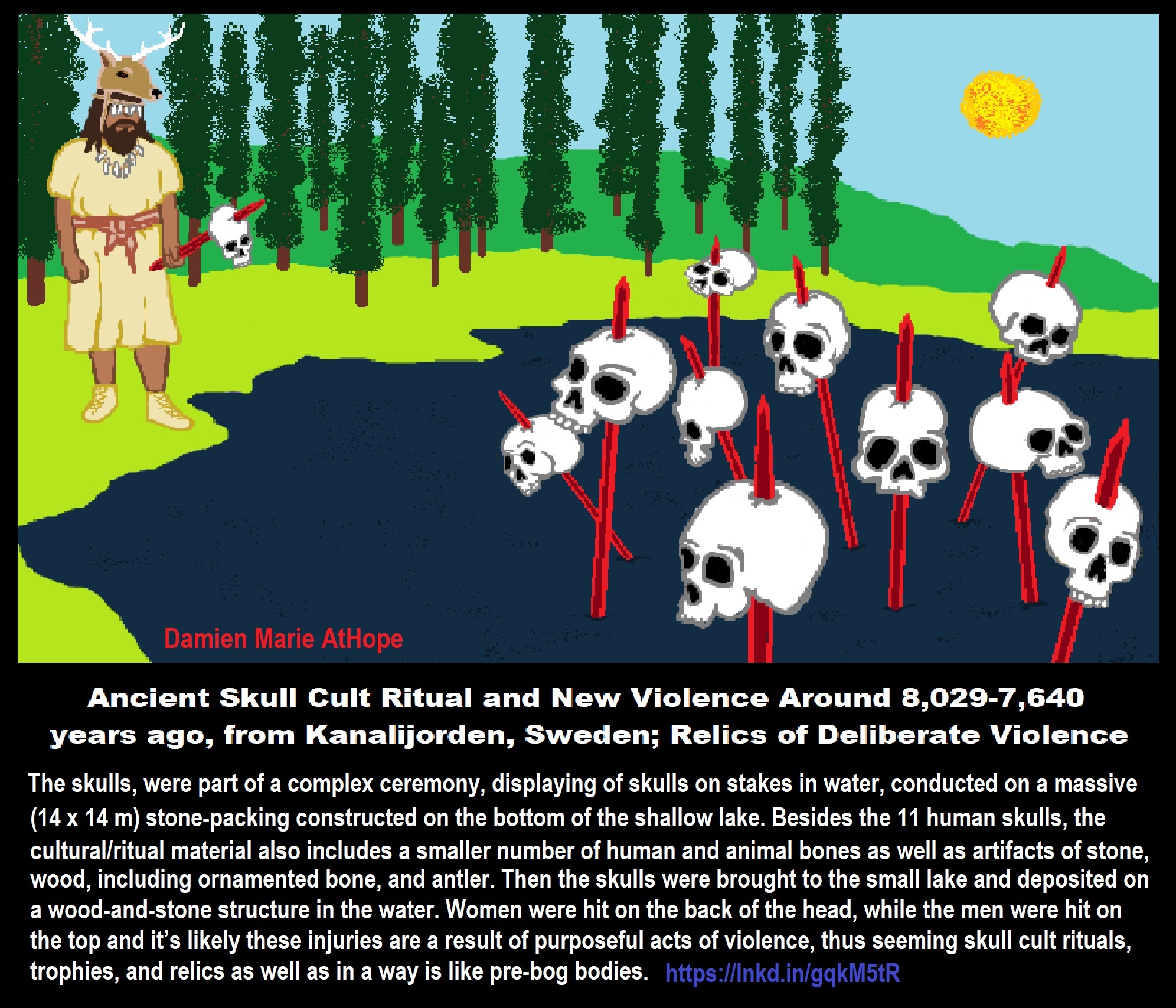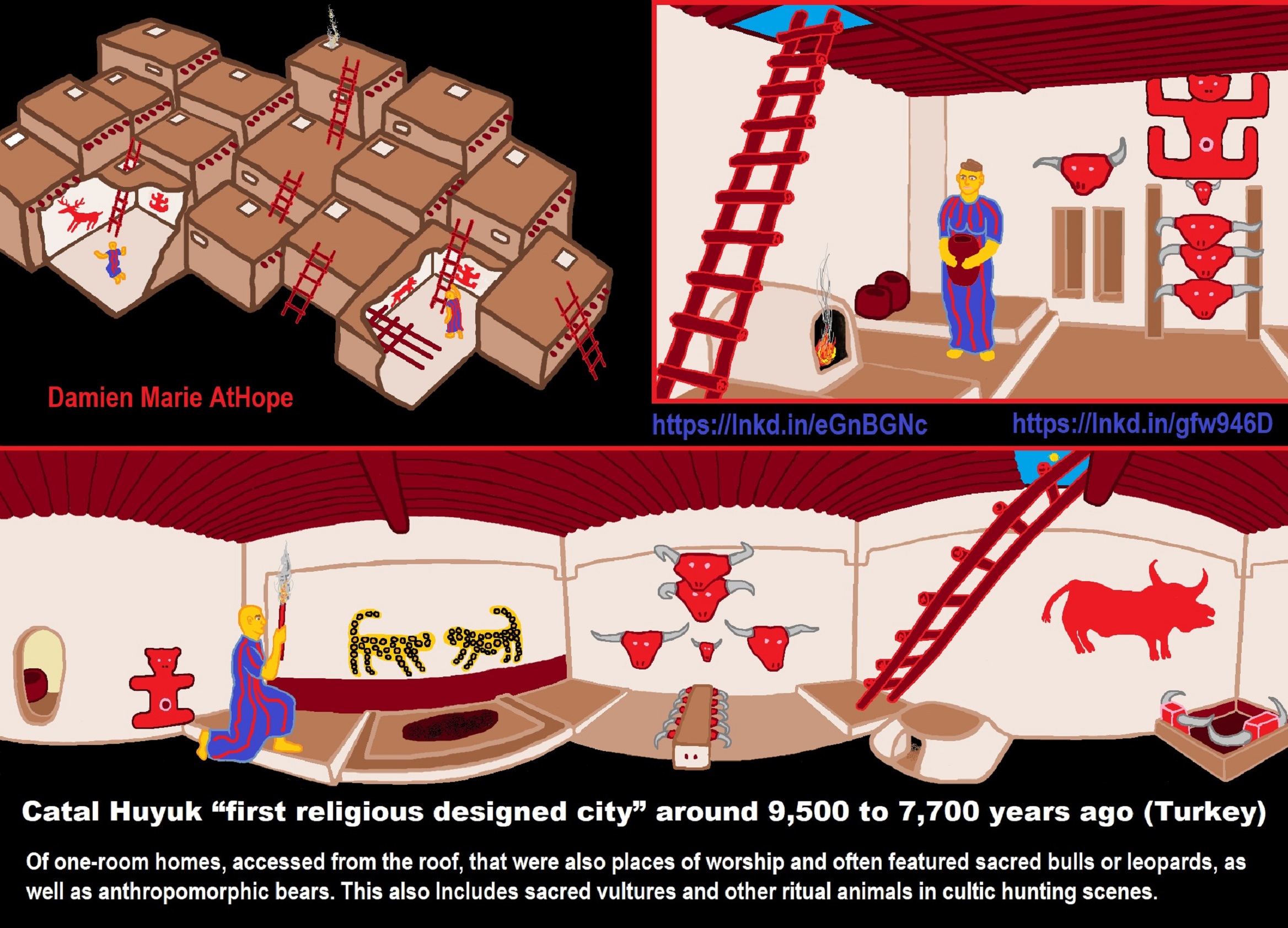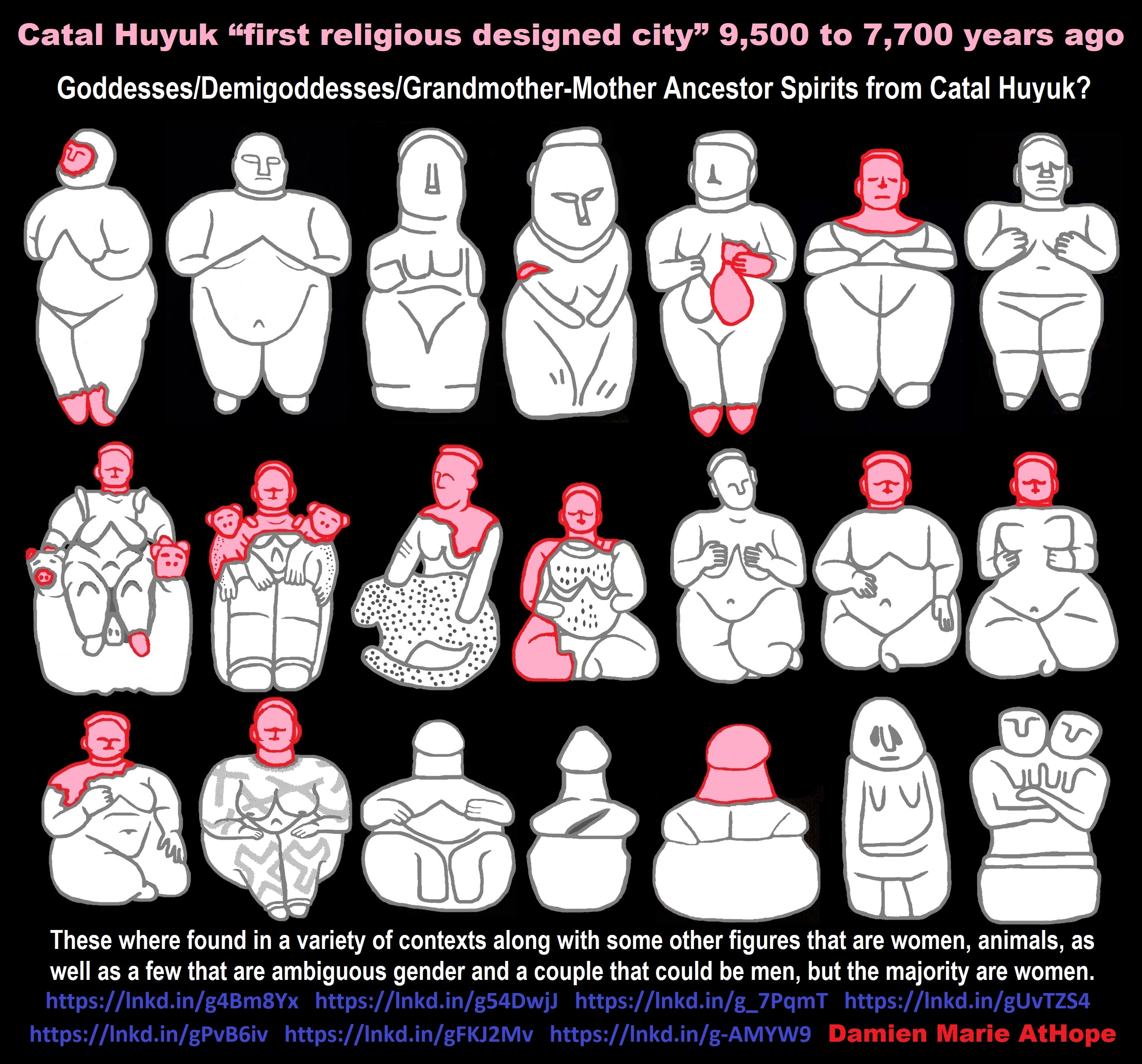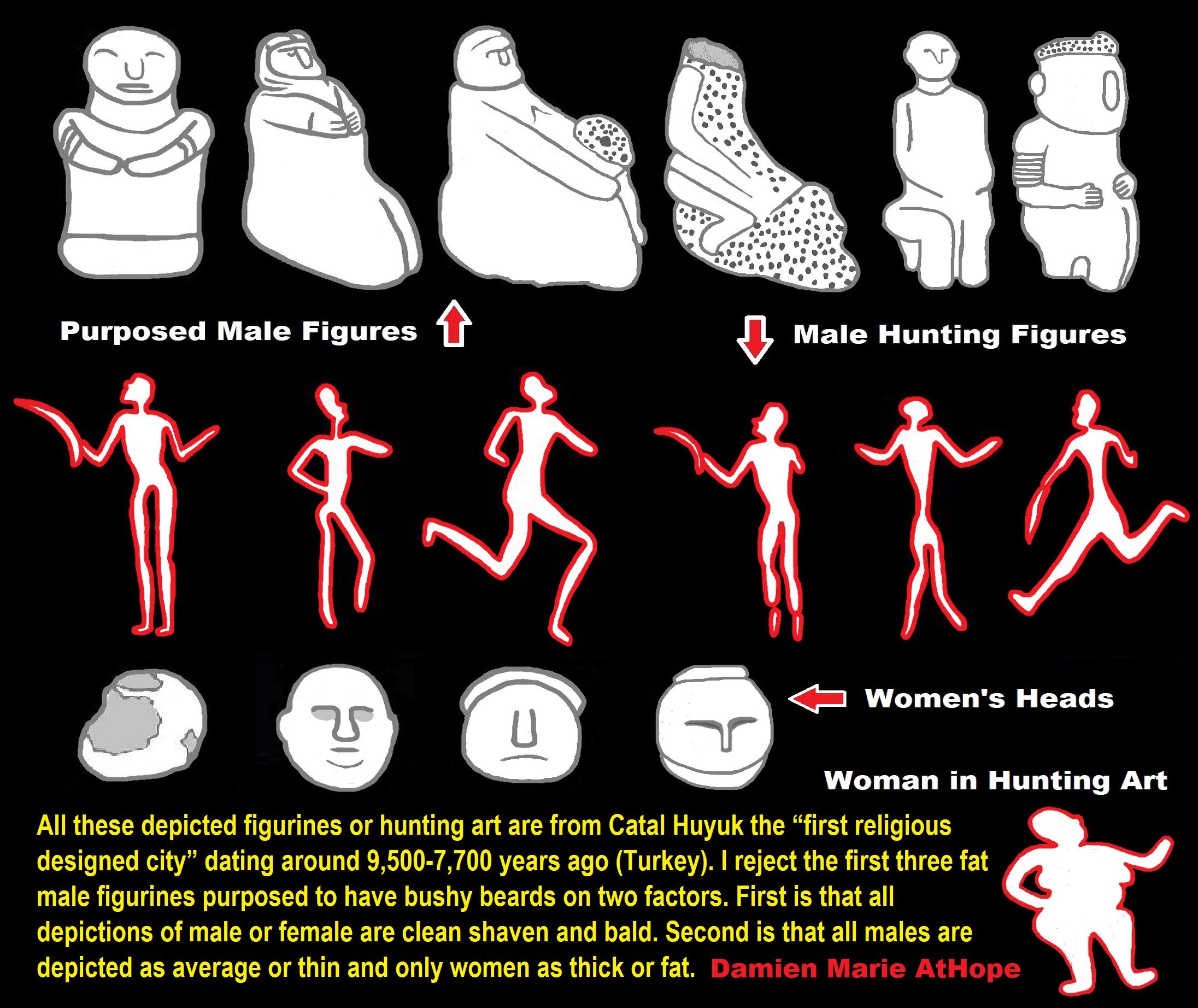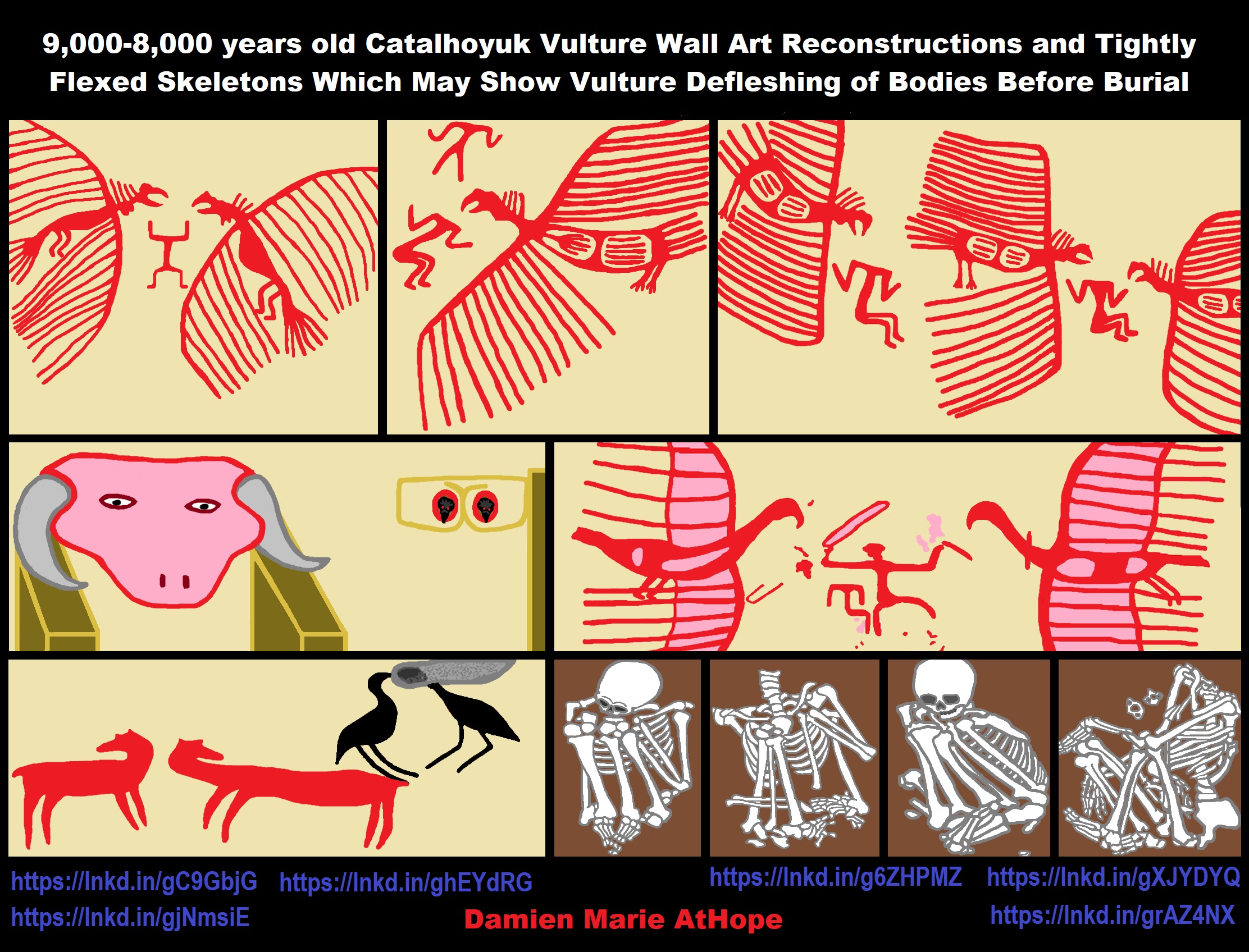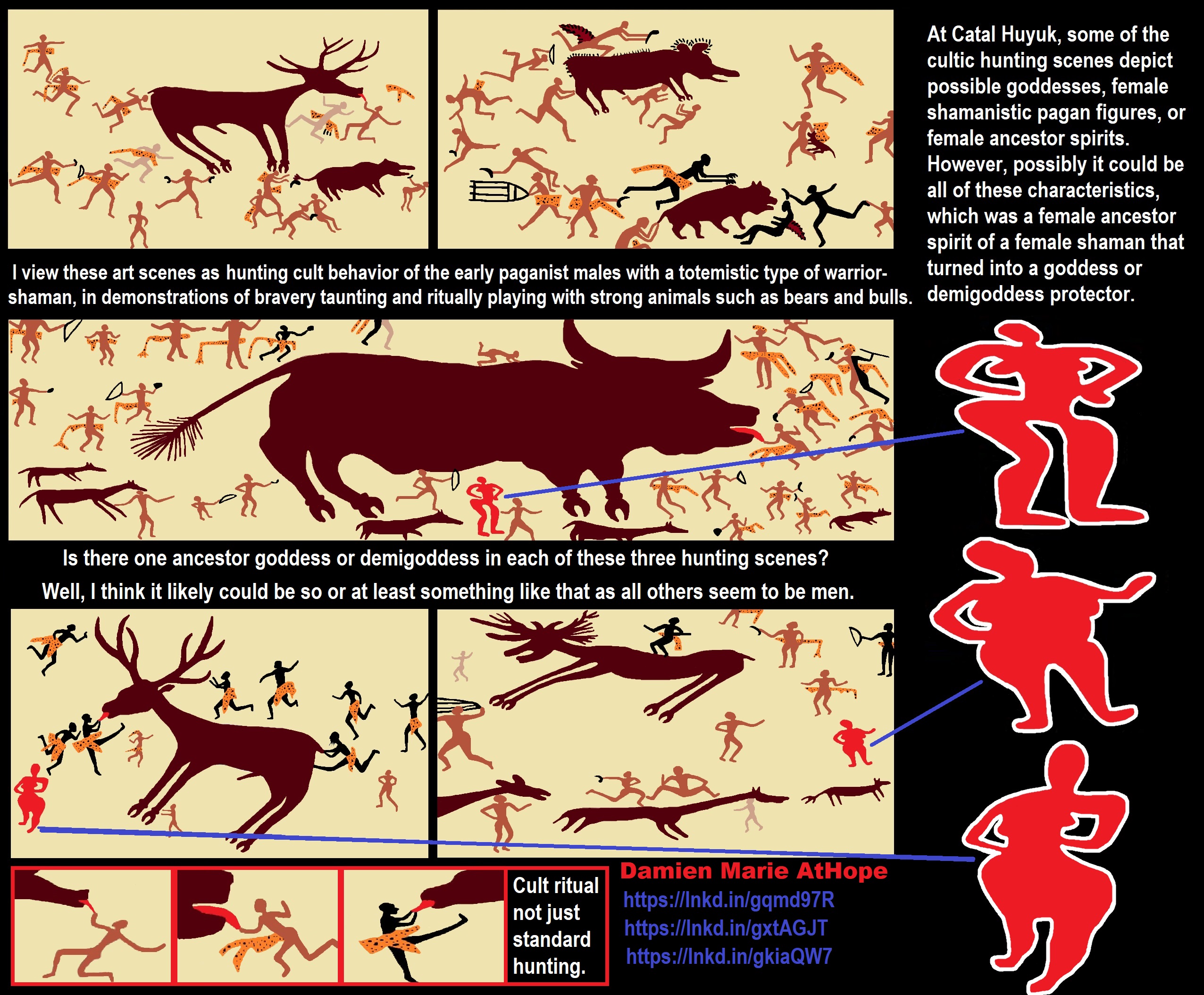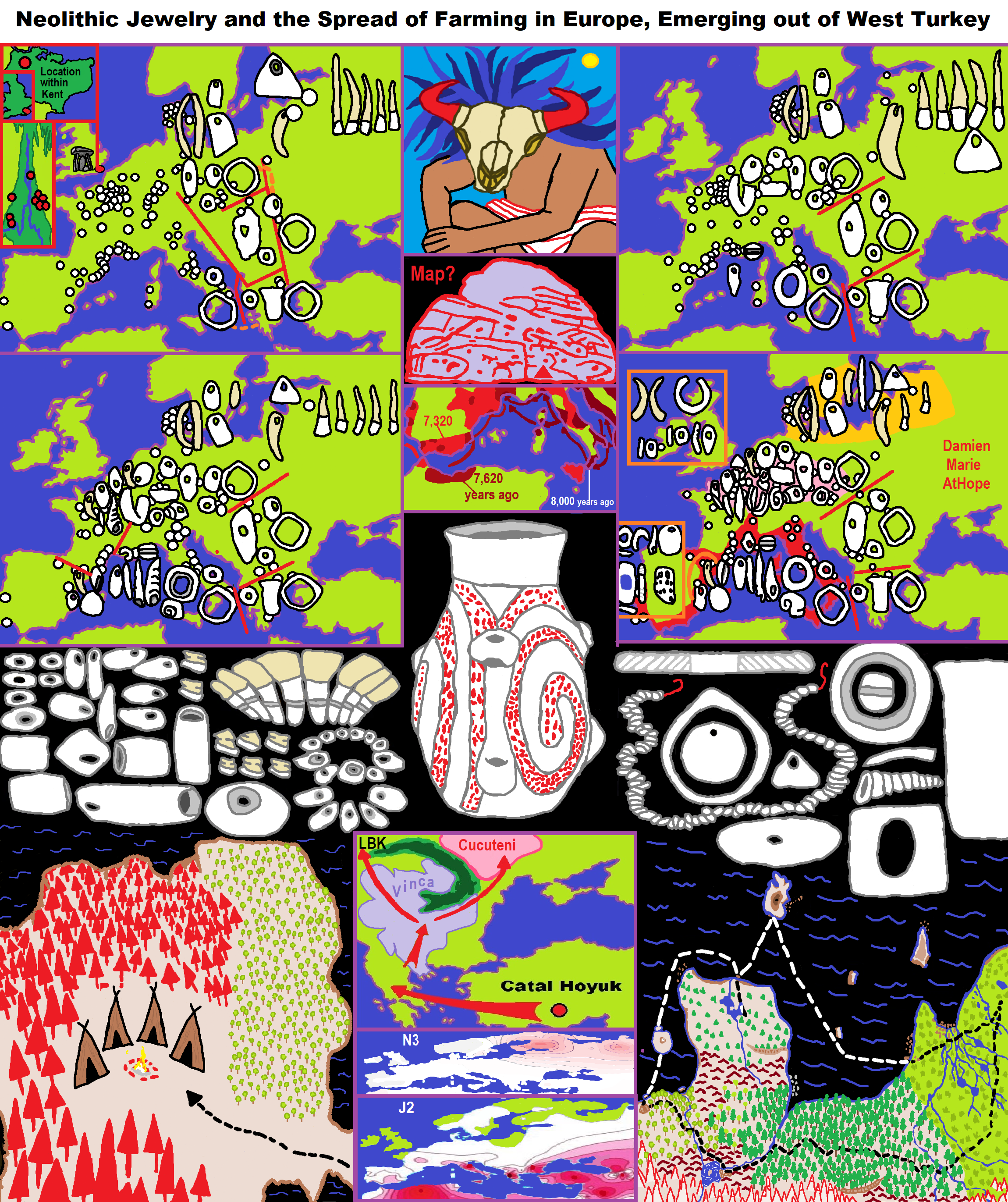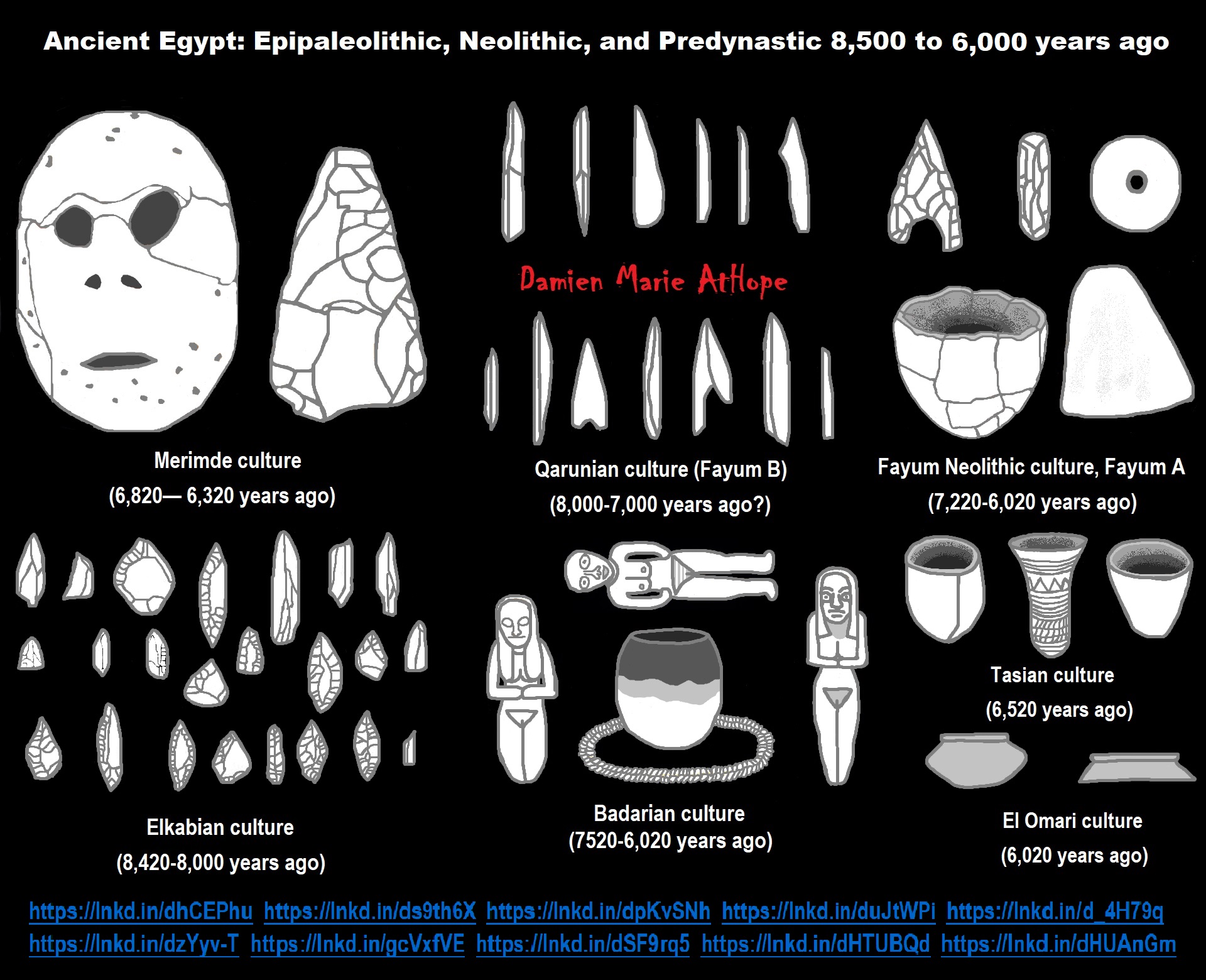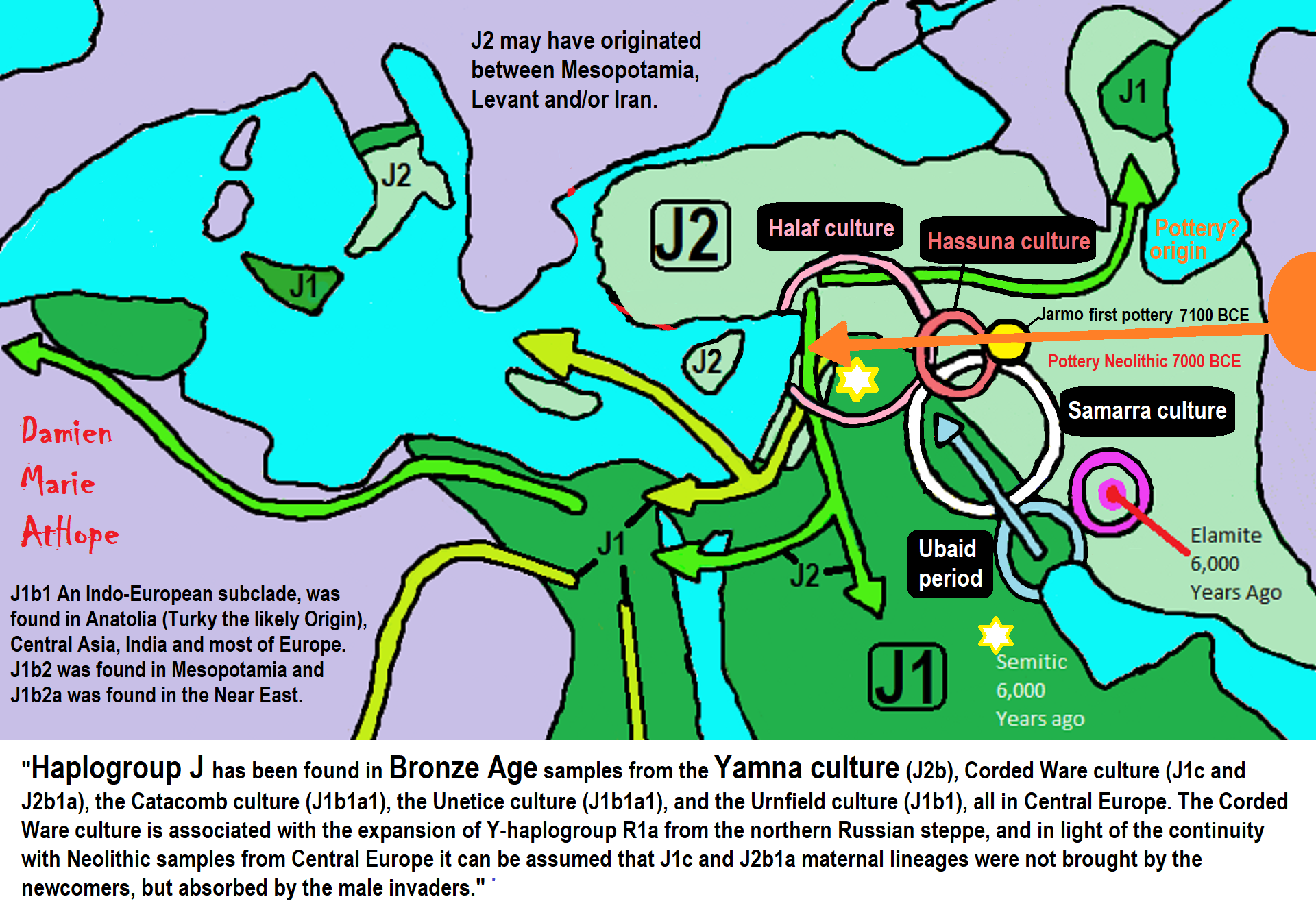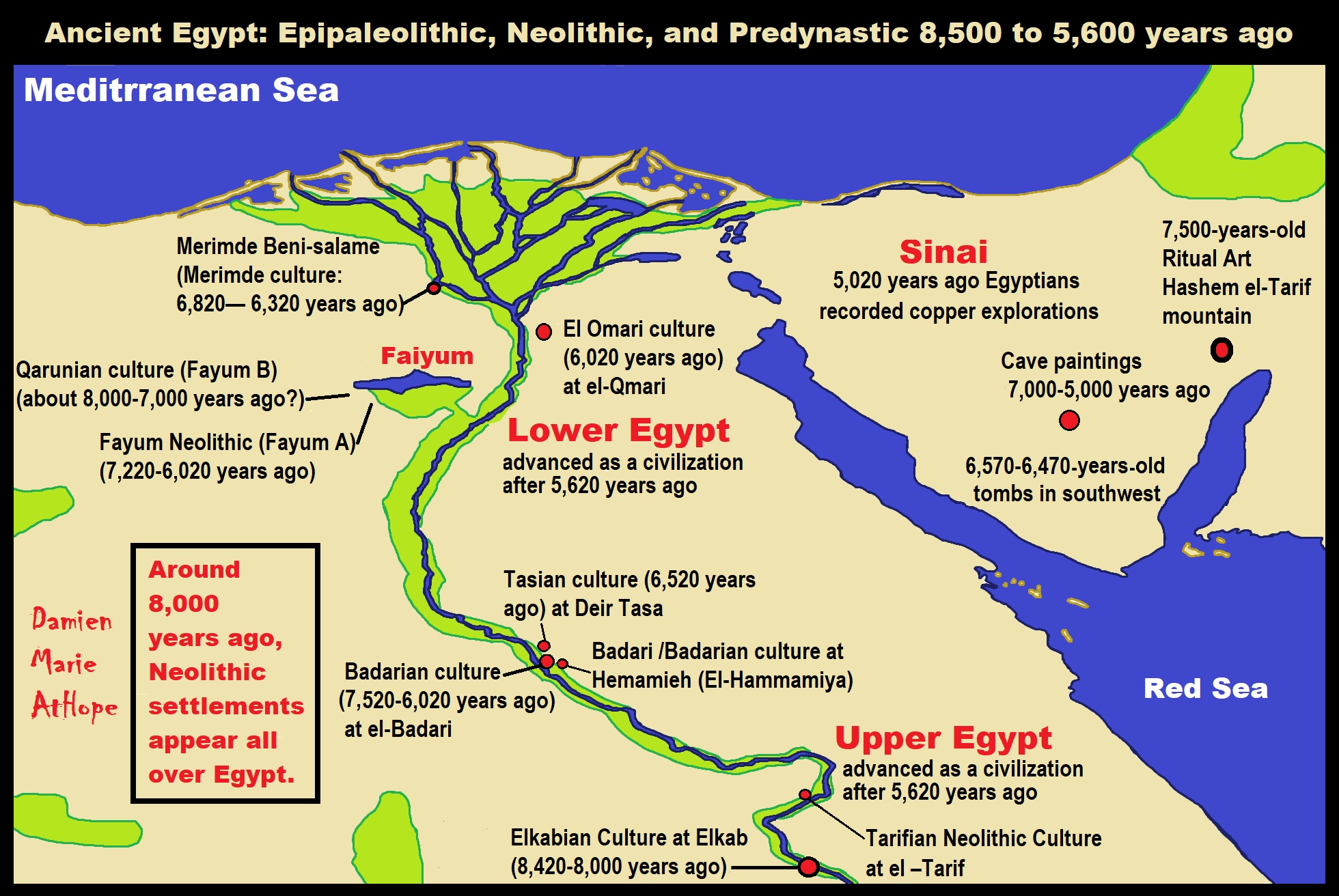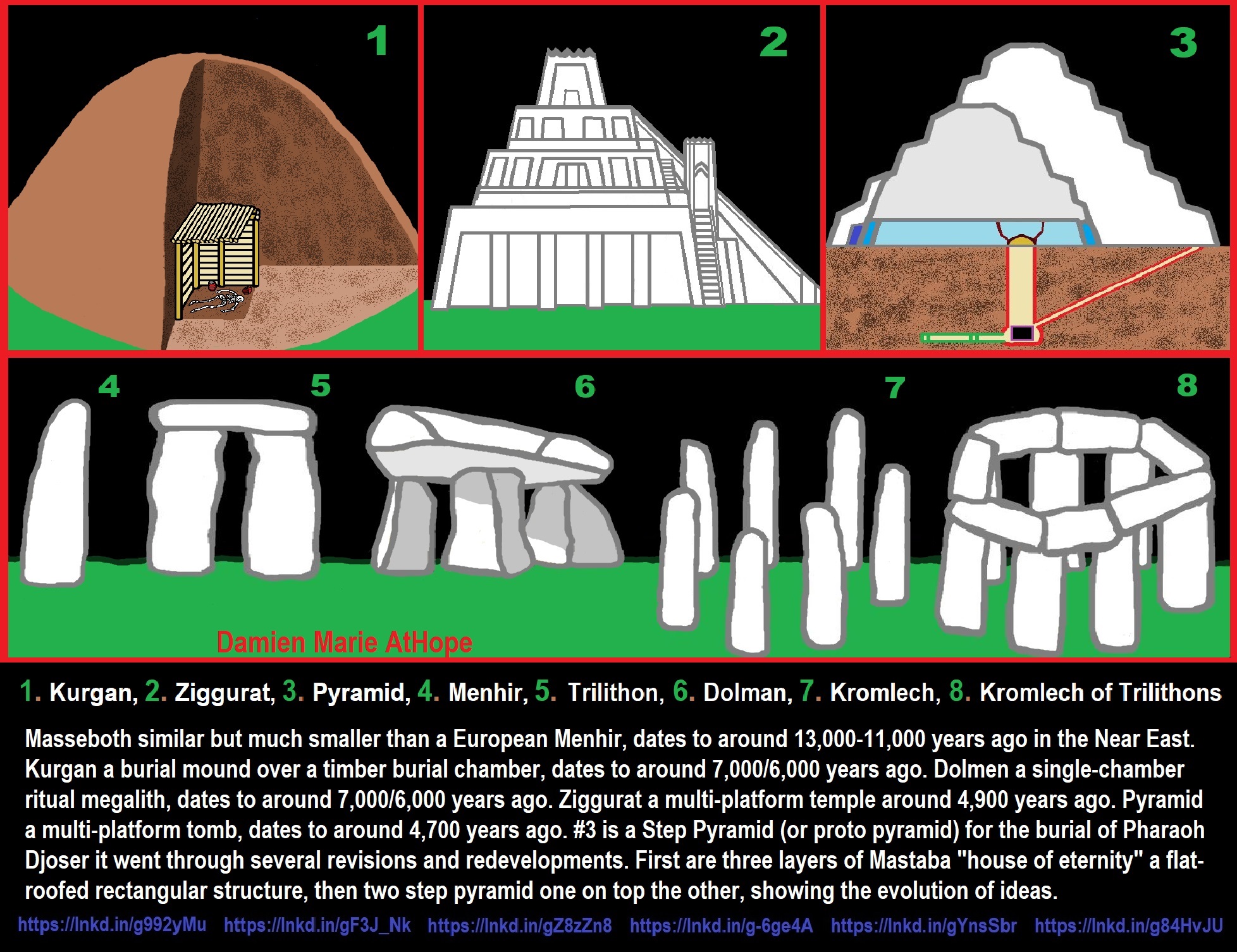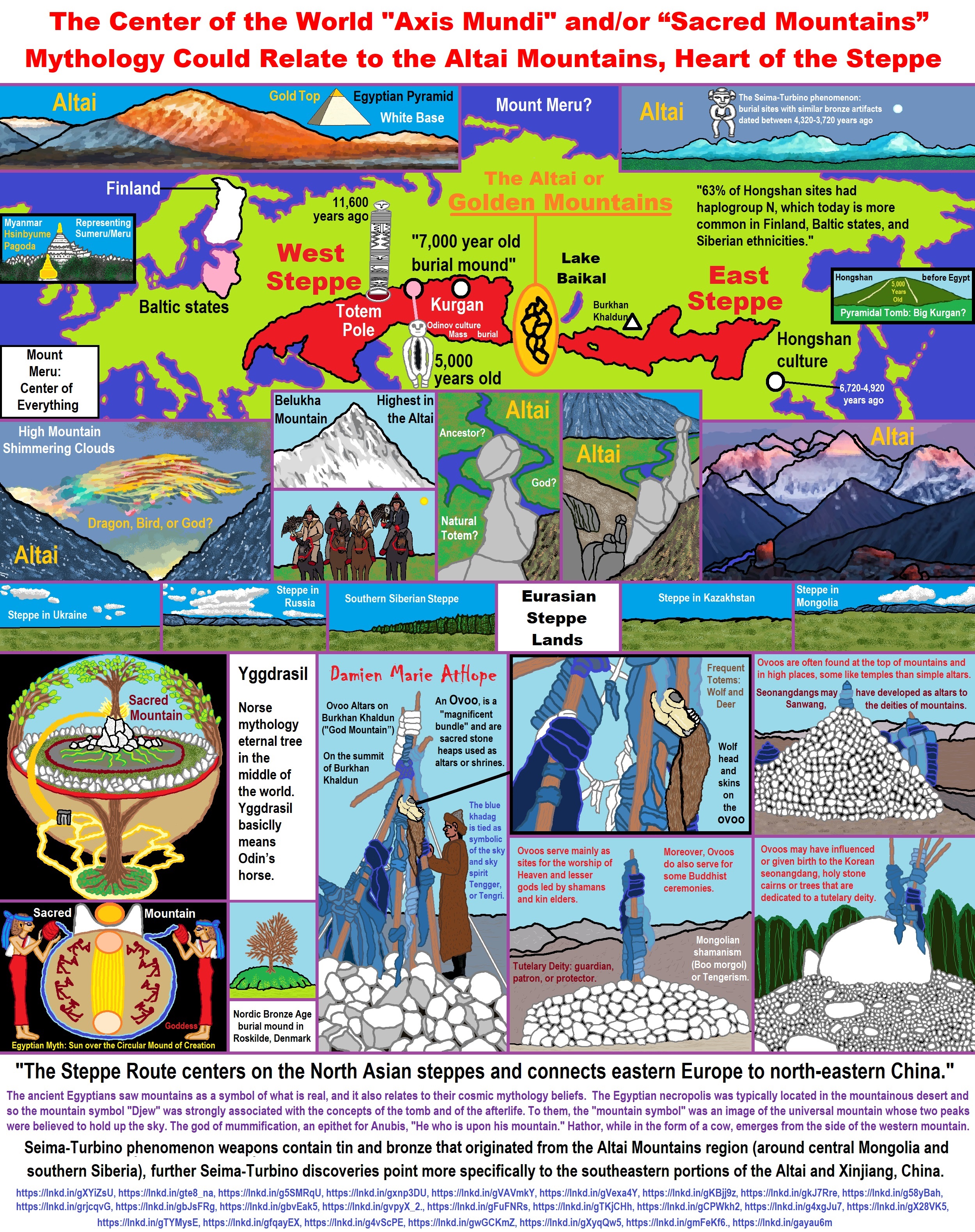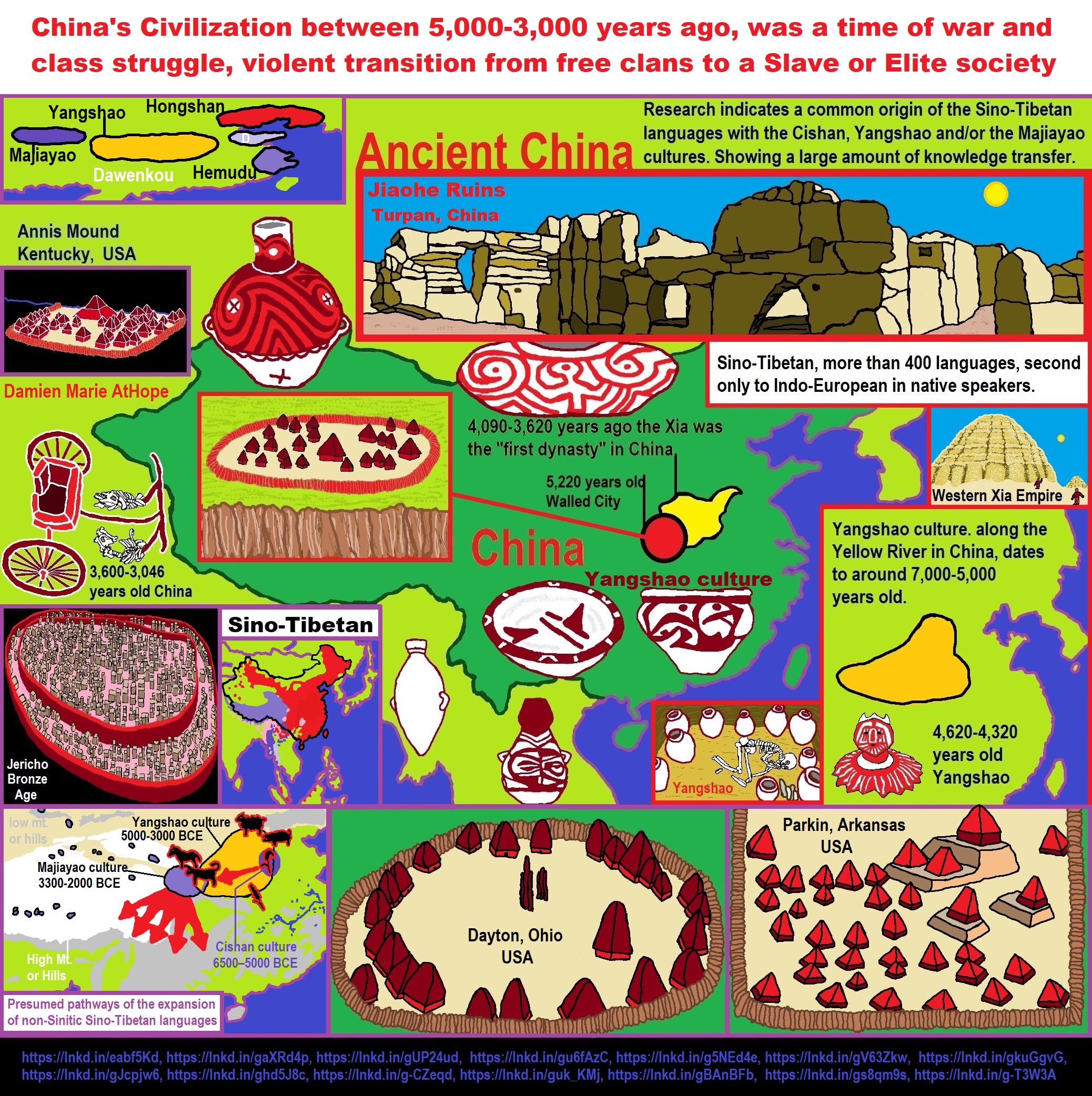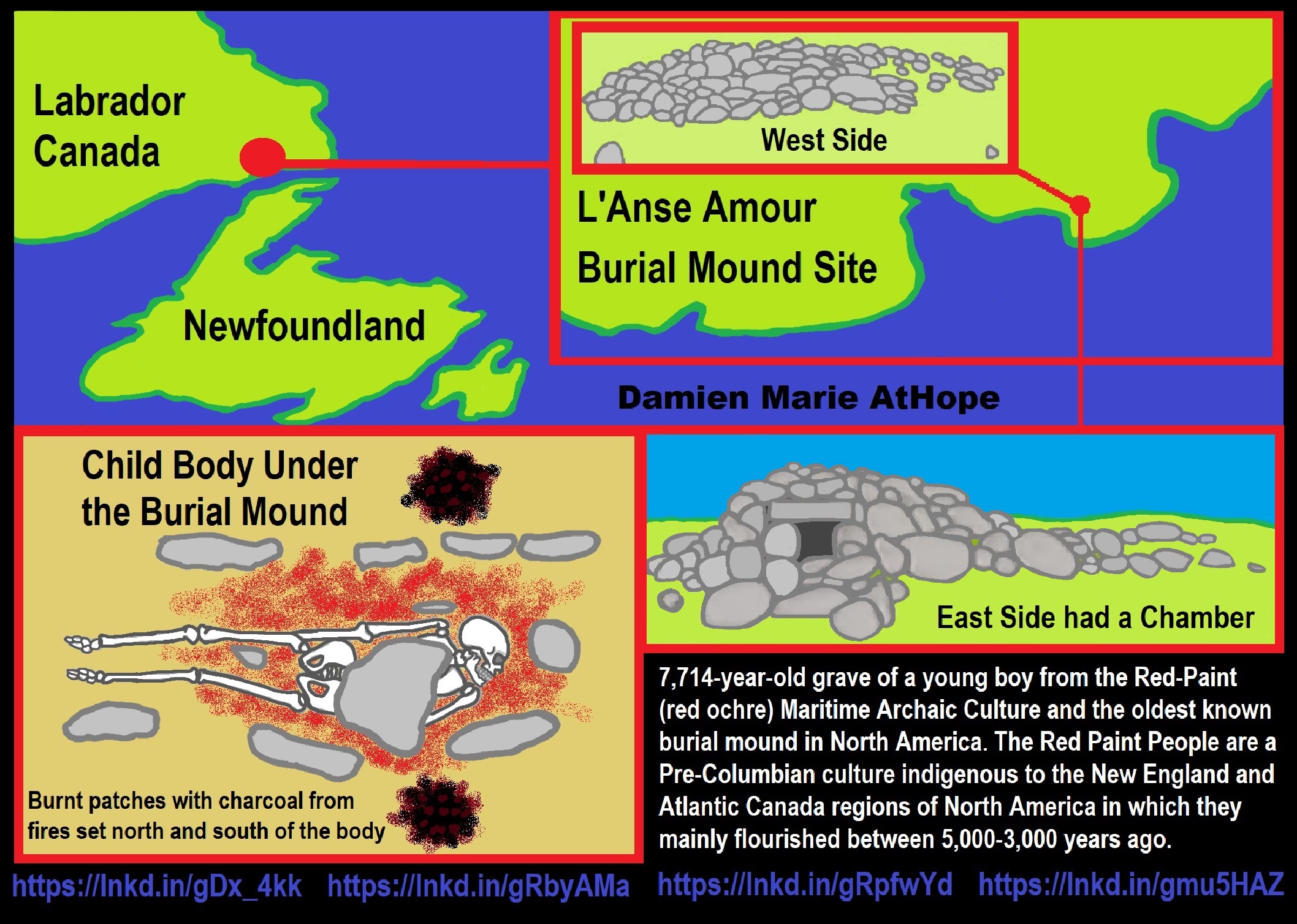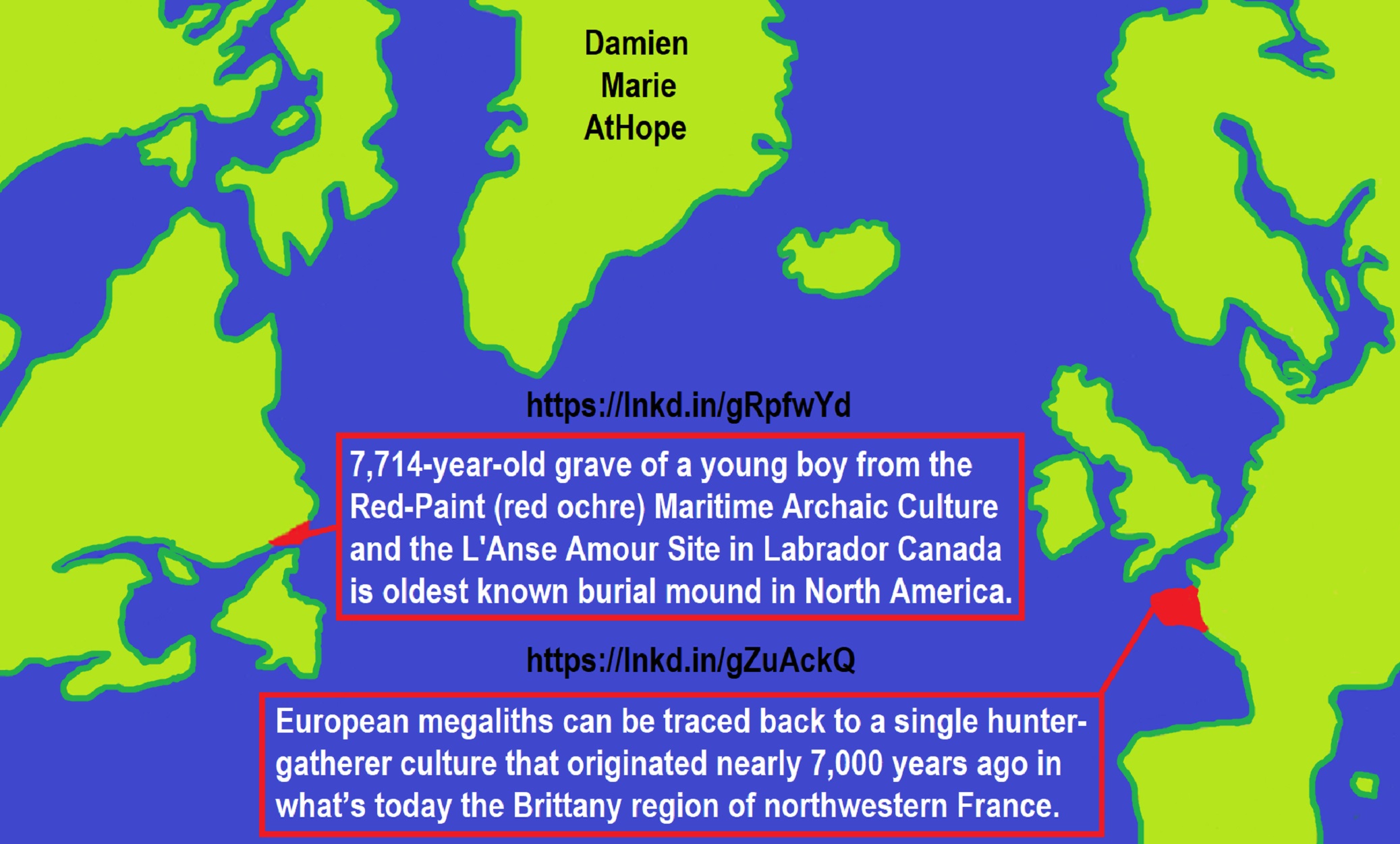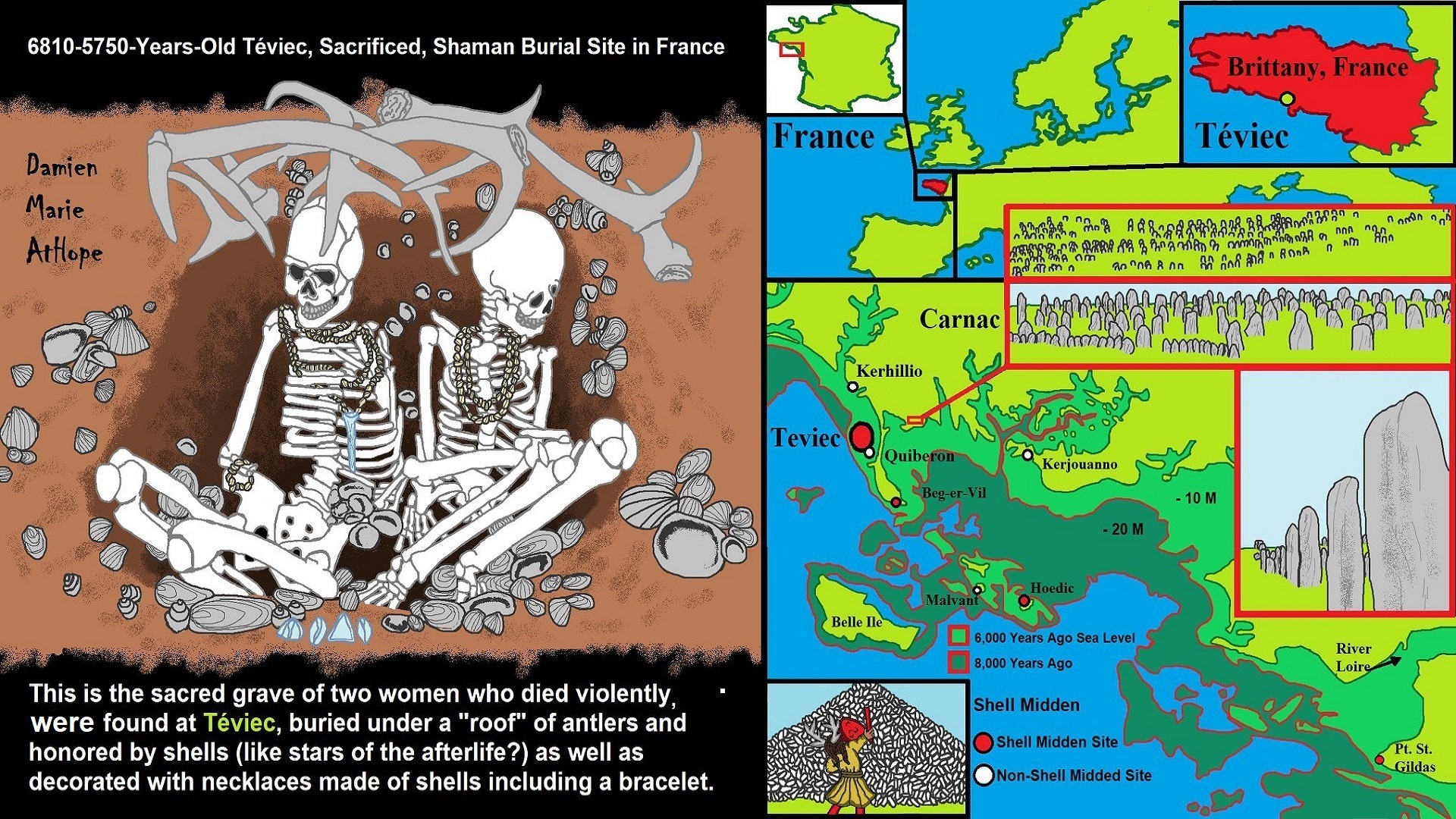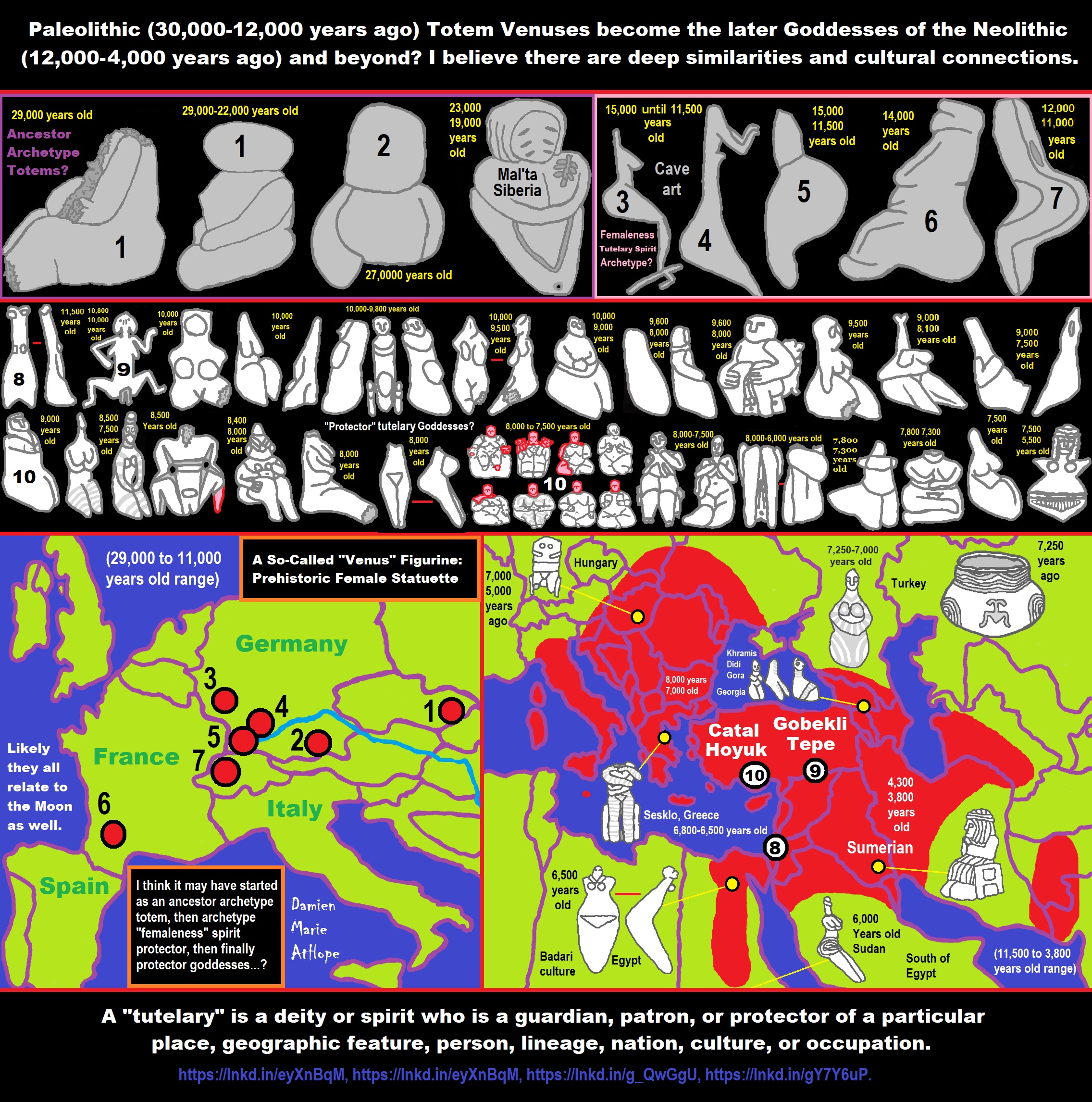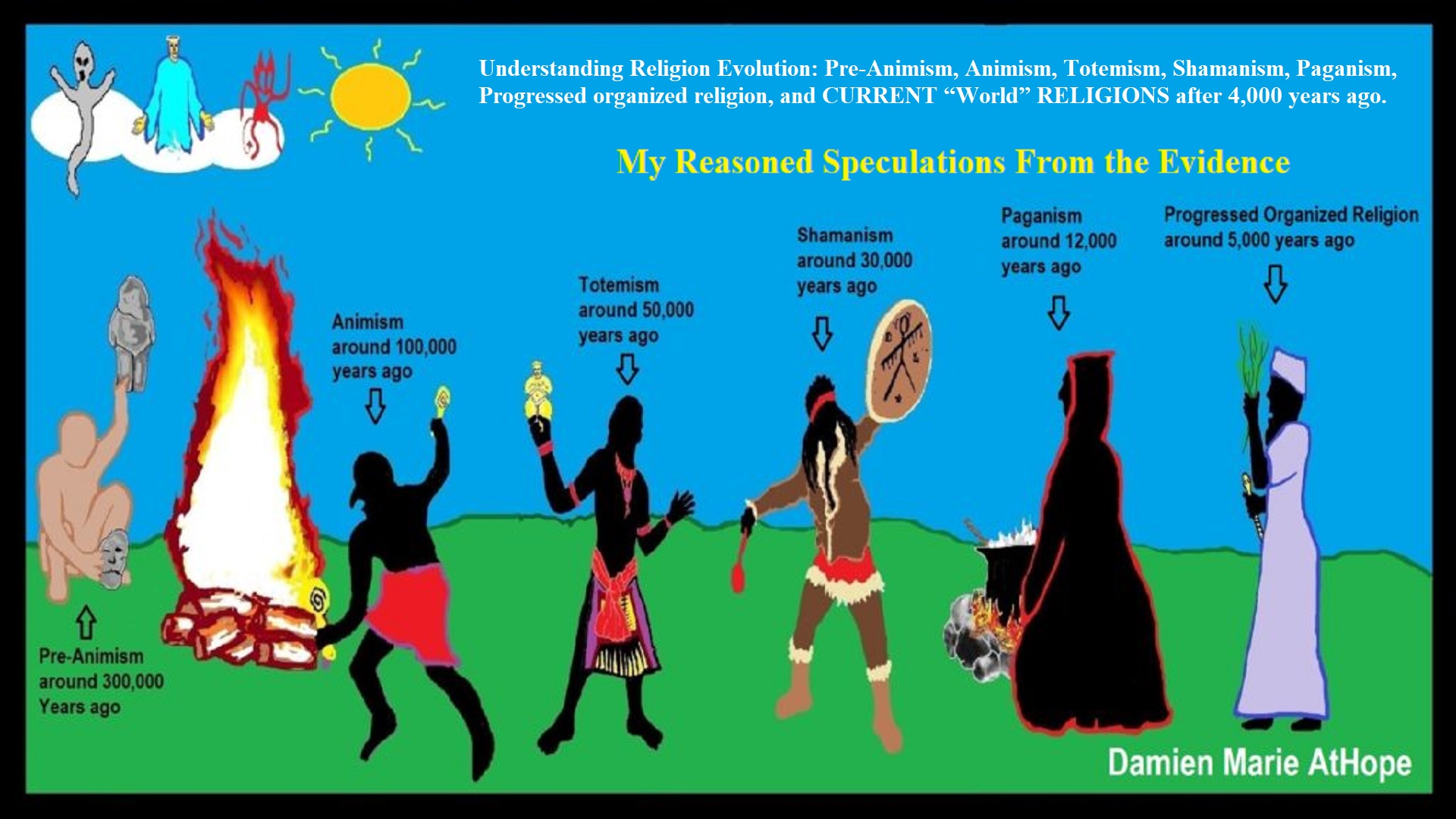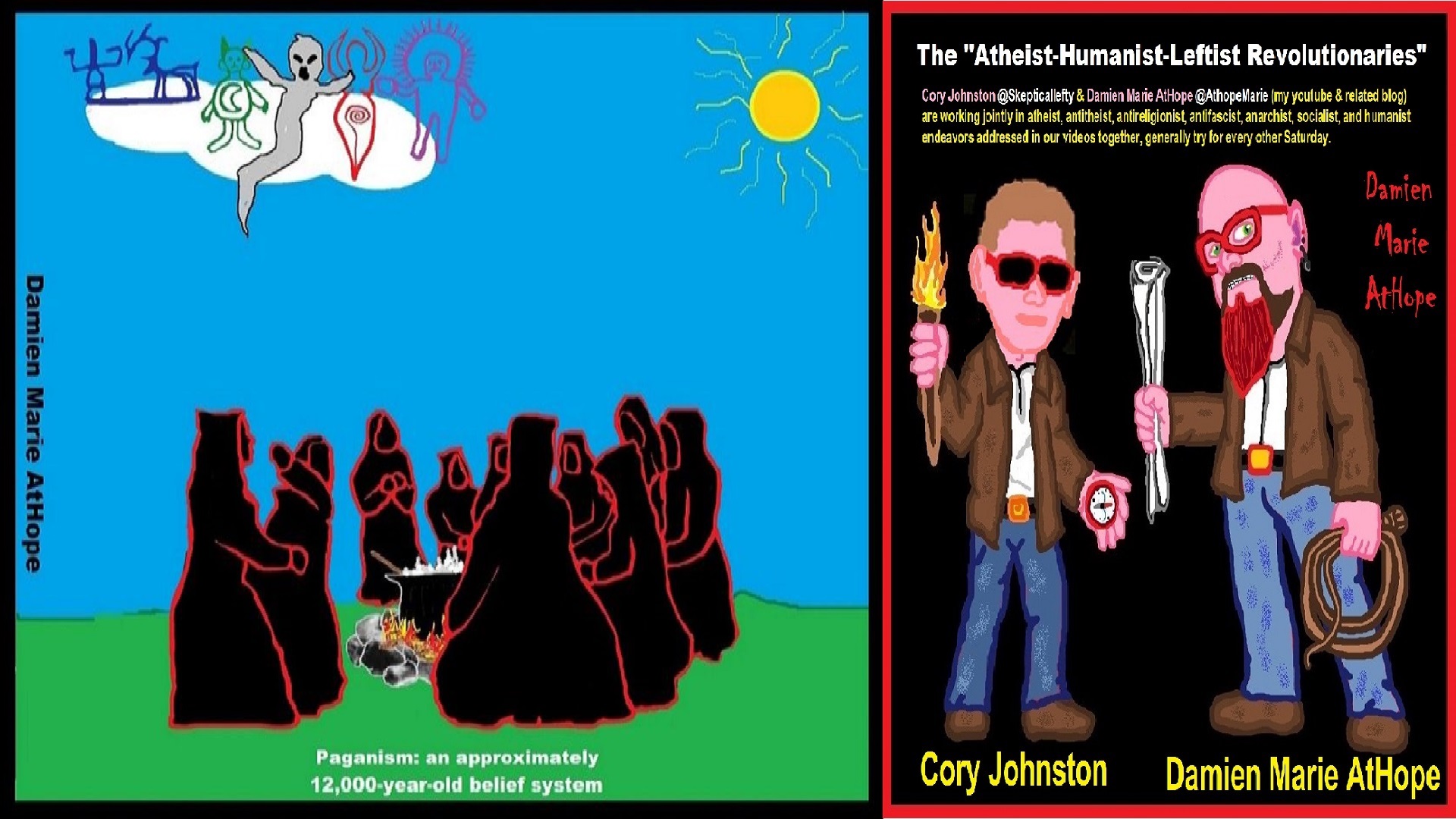
The “Atheist-Humanist-Leftist Revolutionaries”
Cory Johnston ☭ Ⓐ Atheist Leftist @Skepticallefty & @AthopeMarie
Paganism 12,000-4,000 years old
12,000-7,000 years old: related to (Pre-Capitalism)
7,000-5,000 years old: related to (Capitalism) (World War 0) Elite and their slaves!
5,000 years old: related to (Kings and the Rise of the State)
4,000 years old: related to (First Moralistic gods, then the Origin time of Monotheism)
Atheism (without beliefs in theism) is how we all start, then sometime before 7 children tend to think animistically. But they would all outgrow this sometime after 7 as they learn more logical thinking so religion stunts people at the pre-7, “animistic state” that terrorizes them into adulthood supported by myths.
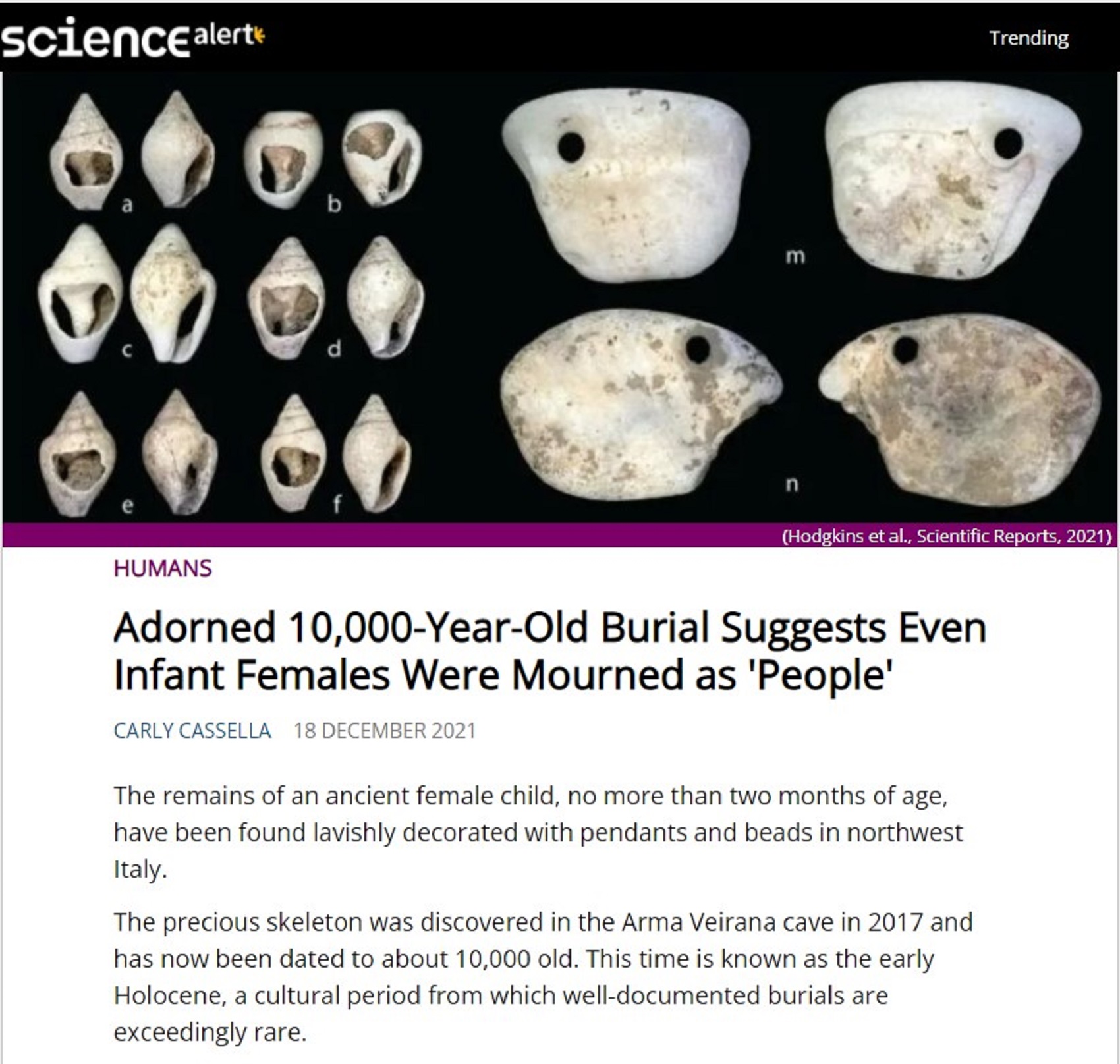

Above: Burial layout. (A) Reconstructing the bones and artifacts as they were in situ. (B)
“The child, nicknamed “Neve”, isn’t the oldest example of an infant burial, but it is the oldest European infant documented to be female. More ancient bones, from as far back as 80,000 years ago, have been degraded to the point where it’s tougher to determine the sex of the deceased. The lack of infant burials in Europe from 22,000 to 33,000 years ago has been interpreted by some archaeologists as a sign that ancient societies did not see the youngest humans as ‘people’. This argument rests on the fact that infants were dying so often at this time, society could not expend the emotional energy to bury each and every one.” ref
“It’s an interesting idea, but it could also be based on several misinterpretations of what is, at best, a patchy fossil record. Most discovered infant burial sites from thousands of years ago suggest the children were laid to rest with the utmost respect and care. What’s more, recent studies have found that burial sites might say less about the rate of childhood death in prehistoric times than they do about the rate of birth.” ref
“Researchers found Neve adorned with at least 66 shell ornaments and 3 pendants, all of which had a hole chiseled out of them. This suggests the decorations were used as beads, possibly sewn onto a blanket, hood, or skirt that disintegrated over time. The whole ensemble indicates hours of work. “Preliminary experiments estimate manufacture of all the ornaments required 8-11 person-hours, not including the time needed to collect shells and sew the beads onto a garment,” the authors write.” ref
“It’s not clear if all these gifts ‘belonged’ to the child, or if they were simply remnants of previous cave use. However, a specific flake of flint sat so close to the infant’s head that experts suspect it was put right next to the body on purpose. While we can’t know if Neve’s burial in Italy was common throughout Europe in the early Holocene, there is reason to suspect it might have been.” ref
“The way in which Neve was laid to rest closely matches another ancient female infant, buried at six weeks of age on the land bridge that once connected Europe to North America. This child burial dates to roughly 11,500 years ago. Together, the two sites suggest the treatment of baby girls following death might have been quite similar in European cultures at the end of the Pleistocene and the beginning of the Holocene.” ref
“This implies that infant personhood inclusive of females has deeper origins in a common ancestral culture or that it arose in parallel in nearly contemporaneous populations across the planet,” the authors write. “Either way, the terminal Pleistocene and earliest Holocene should be considered the minimum antiquity for the recognition of young girls as members of society in cultures around the globe.” ref
Prehistoric Child Burials Begin at Least Around 78,000 Years Ago
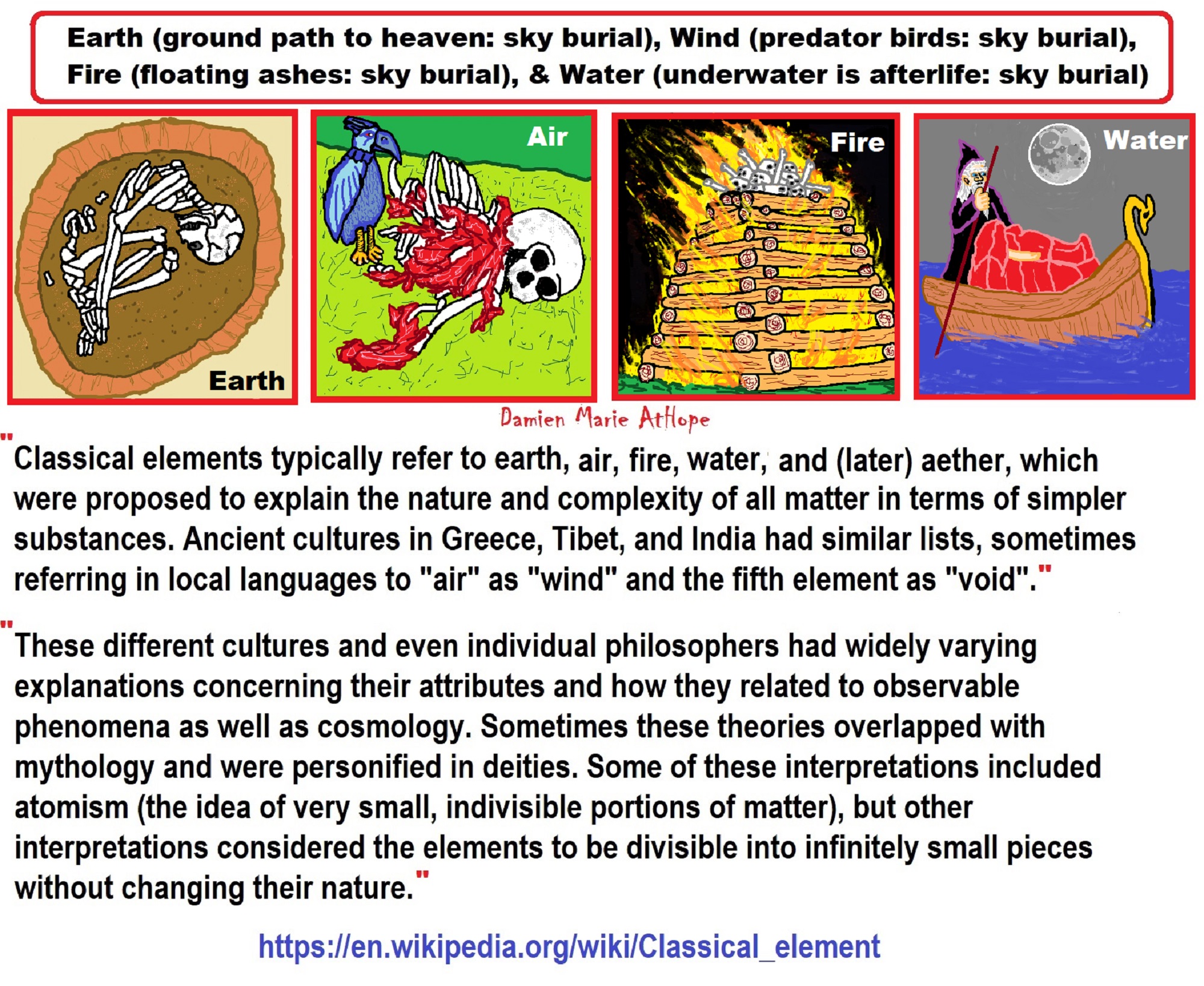
ref, ref, ref, ref, ref, ref, ref, ref
Earth (ground path to heaven: sky burial), Wind (predator birds: sky burial), Fire (floating ashes: sky burial), & Water (underwater is afterlife: sky burial)
7 levels of a fire stack to reach the afterlife/ancestors realm/heaven/stars. So 6 ft down is one less than heaven at 7, also 6 is the number of “man” in bible thinking and 7 is the number of “god.”
I am talking about “sacred-fire” used in rituals in shamanism, related to afterlife beliefs, and Christian burial as well as how the numbers “chosen” likely have numerology similar relationships with afterlife beliefs.
“Numerology is the pseudoscientific belief in a divine or mystical relationship between a number and one or more coinciding events. It is also the study of the numerical value of the letters in words, names, and ideas. It is often associated with the paranormal, alongside astrology, and similar to divinatory arts. Seen in Arab numerology, Chinese numerology, Egypt numerology, Mesopotamian numerology, greek numerology, Iranian numerology, and Indian numerology, ” ref
“The practice of gematria, assigning numerical values to words and names and imputing those values with religious meaning, dates back to antiquity. An Assyrian inscription from the 8th century BCE or 2,821 years ago, commissioned by Sargon II. declares “the king built the wall of Khorsabad 16,283 cubits long to correspond with the numerical value of his name.” Rabbinic literature used gematria to interpret passages in the Hebrew Bible.” ref
Numbers in Norse mythology?
“The numbers three and nine are significant numbers in Norse mythology and paganism. Both numbers (and multiples thereof) appear throughout surviving attestations of Norse paganism, in both mythology and cultic practice. While the number three appears significant in many cultures, Norse mythology appears to put special emphasis on the number nine. Along with the number 27, both numbers also figure into the lunar Germanic calendar.” ref
Three: Triple deity
“The number three occurs with great frequency in grouping individuals and artifacts:
- There were three original beings: the primordial cow Audhumla, Ymir the first giant, and Búri the first god and grandfather of Odin.
- For three days Audhumla licked the ice of Ginnungagap until Búri was freed.
- Ymir had three direct offspring: a boy and girl who grew from beneath his arms and a six-headed son who sprang from the coupling of his feet.
- There were three generations of giants before the race as a whole was destroyed by the deluge of Ymir’s blood, after which time his grandson Bergelmir became the progenitor of a new line.
- The heart of the giant Hrungnir was triangular and made of stone.
- There are three named Norns.
- Odin had two brothers, Vili and Vé (or Lodur and Hoenir according to Völuspá), numbering three sons of Borr who created the world and gave life to the first human beings.
- Odin is the ruler of the third generation of gods as the son of Borr and grandson of Búri.
- Yggdrasil the World Tree has three roots. Under the three roots are three sacred wells, one for each, including the Well of Urd in Asgard, the Well of Mimir located “among the frost giants”, and Hvergelmir in Niflheim.
- Odin endured three hardships upon the World Tree in his quest for the runes: he hanged himself, wounded himself with a spear, and suffered from hunger and thirst.
- In the Gylfaginning section of the Prose Edda, King Gylfi is confronted by a triple throne at the home of the gods, one being seated and occupied atop another.
- Loki has three malign progeny by the giantess Angrboda: the wolf Fenrir, Jörmungandr the World Serpent, and Hel.
- Prior to Ragnarök, there will be three hard winters without an intervening summer, the Fimbulwinter.
- There are three main events leading up to Ragnarök itself: the birth of Loki’s three monstrous children, the death of Baldr and subsequent punishment of Loki, and the onset of Fimbulwinter.
- The wolf Fenrir was bound by three fetters: Loeding, Drómi, and Gleipnir, of which only the last held him.
- Loki is bound with three bonds made from the entrails of his son through holes in three upright slabs of rock, the first under his shoulders, the second under his loins, and the third under the backs of his knees.
- In the poem Völuspá from the Poetic Edda, the monstrous hound Garmr howls three times at the Gnipa-cave (or at least, the description of his howling is repeated three times).
- In Völuspá, the gods burn Gullveig three times, and three times she is reborn.
- During the onset of Ragnarök, three cockerels will begin to crow, heralding the final conflict: Gullinkambi for the gods, Fjalar for the giants, and an unnamed third for the dead.
- Bifröst the rainbow bridge has three colors. It also has two other names, Ásbrú and Bilröst, thus having three names.
- Heimdall has three special powers in his role as guardian of the rainbow bridge. He needs less sleep than a bird, can see at night for a hundred leagues, and is able to hear the grass growing on the earth.
- Odin has three special possessions: His spear Gungnir, his golden ring Draupnir and his eight-legged horse Sleipnir.
- Thor has three main weapons for use against the giants: his hammer Mjolnir, a magical belt that doubles his strength, and a pair of iron gauntlets that allow him to wield the hammer.
- Freyr has three magical items, including the ship Skidbladnir, his boar Gullinbursti and a sword with the ability to fight on its own which he gave to Skirnir in return for his role in the courtship of Gerd.
- Freyja also has three special artifacts, including the priceless necklace Brisingamen, a cloak that allows her to assume the form of a falcon, and a chariot drawn by a pair of great cats.
- In the stronghold of the giant Útgarda-Loki, Thor drank three mighty draughts from a horn during a drinking contest but gave up when he was unable to empty the horn of its contents; this was also one of three tasks he did -and failed- during his stay, the other two being to lift a cat (he made it lift a paw, leaving three on the ground) and to defeat an old woman; it is later revealed that the horn was connected to the sea (which he leveled down by three fingers), the cat was the World Serpent and the old woman, the Old Age itself. Previous to this, Thor and his companions had met the giant, who was under the assumed name Skrýmir, in the forest outside the castle. When Skrymir had gone to sleep during their journey together, Thor became annoyed by his loud snoring and struck at him three times with his hammer, but in each case, the blow was misdirected through magic and illusion.
- The builder of the walls of Asgard offered to build them in three seasons in return for three prizes: the sun and moon and the hand of Freyja in marriage.
- Odin spent three nights with the giantess Gunnlod in order to obtain the mead of poetry. She then allowed him to take three drinks of the mead, one from each of three vessels.
- The group of dwarves known only as the sons of Ivaldi fashioned three wondrous artifacts, including the ship of Freyr, the spear of Odin, and the golden hair of Sif. The dwarf brothers Eitri and Brokk also created three items, including the boar of Freyr, the golden ring of Odin, and the hammer of Thor.
- There were three statues of Odin, Thor, and Freyr in the Temple at Uppsala.
- Three of Odin’s sons remain after Ragarök: Vidar, Baldr, and Hǫðr.” ref
Japan elements Godai (Japanese philosophy)
“Japanese traditions use a set of elements called the 五大 (godai, literally “five great”). These five are earth, water, fire, wind/air, and void. These came from Indian Vastu shastra philosophy and Buddhist beliefs; in addition, the classical Chinese elements (五行, wu xing) are also prominent in Japanese culture, especially to the influential Neo-Confucianists during the medieval Edo period.” ref
- Earth represented things that were solid.
- Water represented things that were liquid.
- Fire represented things that destroy.
- Wind represented things that moved.
- Void or Sky/Heaven represented things, not of our everyday life. ref
Western astrology: Astrology and the classical elements
“Western astrology uses the four classical elements in connection with astrological charts and horoscopes. The twelve signs of the zodiac are divided into the four elements: Fire signs are Aries, Leo, and Sagittarius, Earth signs are Taurus, Virgo, and Capricorn, Air signs are Gemini, Libra, and Aquarius, and Water signs are Cancer, Scorpio, and Pisces.” ref
Buddhism: Mahābhūta
“In the Pali literature, the mahabhuta (“great elements”) or catudhatu (“four elements”) are earth, water, fire, and air. In early Buddhism, the four elements are a basis for understanding suffering and for liberating oneself from suffering. The earliest Buddhist texts explain that the four primary material elements are solidity, fluidity, temperature, and mobility, characterized as earth, water, fire, and air, respectively.” ref
“The Buddha‘s teaching regarding the four elements is to be understood as the base of all observation of real sensations rather than as a philosophy. The four properties are cohesion (water), solidity or inertia (earth), expansion or vibration (air), and heat or energy content (fire). He promulgated a categorization of mind and matter as composed of eight types of “kalapas” of which the four elements are primary and a secondary group of four are color, smell, taste, and nutriment which are derivative from the four primaries. Tibetan Buddhist medical literature speaks of the Panch Mahābhūta (five elements).” ref
“Thanissaro Bhikkhu (1997) renders an extract of Shakyamuni Buddha’s from Pali into English thus:
Just as a skilled butcher or his apprentice, having killed a cow, would sit at a crossroads cutting it up into pieces, the monk contemplates this very body — however it stands, however it is disposed — in terms of properties: ‘In this body there is the earth property, the liquid property, the fire property, & the wind property.” ref
Hinduism: Mahābhūta § Hinduism, and Pancha Bhoota
“The system of five elements are found in Vedas, especially Ayurveda, the pancha mahabhuta, or “five great elements”, of Hinduism are:
- bhūmi or pṛthvī (earth),
- āpas or jala (water),
- agní or tejas (fire),
- vāyu, vyāna, or vāta (air or wind)
- ākāśa, vyom, or śūnya (space or zero) or (aether or void).” ref
“They further suggest that all of creation, including the human body, is made of these five essential elements and that upon death, the human body dissolves into these five elements of nature, thereby balancing the cycle of nature.” ref
“The five elements are associated with the five senses, and act as the gross medium for the experience of sensations. The basest element, earth, created using all the other elements, can be perceived by all five senses — (i) hearing, (ii) touch, (iii) sight, (iv) taste, and (v) smell. The next higher element, water, has no odor but can be heard, felt, seen, and tasted. Next comes fire, which can be heard, felt, and seen. Air can be heard and felt. “Akasha” (aether) is beyond the senses of smell, taste, sight, and touch; it being accessible to the sense of hearing alone.” ref
“The Dutch historian of science Eduard Jan Dijksterhuis writes that the theory of the classical elements “was bound to exercise a really harmful influence. As is now clear, Aristotle, by adopting this theory as the basis of his interpretation of nature and by never losing faith in it, took a course which promised few opportunities and many dangers for science.” Bertrand Russell says that Aristotle’s thinking became imbued with almost biblical authority in later centuries. So much so that “Ever since the beginning of the seventeenth century, almost every serious intellectual advance has had to begin with an attack on some Aristotelian doctrine.” ref


ref, ref, ref, ref, ref, ref, ref, ref, ref, ref, ref, ref, ref, ref, ref, ref, ref, ref
I do not hate simply because I challenge and expose myths or lies any more than others being thought of as loving simply because of the protection and hiding from challenge their favored myths or lies.
The truth is best championed in the sunlight of challenge.
An archaeologist once said to me “Damien religion and culture are very different”
My response, So are you saying that was always that way, such as would you say Native Americans’ cultures are separate from their religions? And do you think it always was the way you believe?
I had said that religion was a cultural product. That is still how I see it and there are other archaeologists that think close to me as well. Gods too are the myths of cultures that did not understand science or the world around them, seeing magic/supernatural everywhere.
No gentry but grave-makers: inequality beyond property accumulation at Neolithic Çatalhöyük
“ABSTRACT: Archaeologists have adopted the Gini coefficient to evaluate unequal accumulations of material, supporting narratives modeled on modern inequality discourse. Proxies are defined for wealth and the household, to render 21st century-style economic tensions perceptible in the past. This ‘property paradigm’ treats material culture as a generic rather than substantive factor in unequal pasts. We question this framing while suggesting that the Gini coefficient can prompt a deeper exploration of value. Our study grows from multi-material evaluation of inequality at Çatalhöyük, Turkey. Here we use the Gini coefficient to scrutinize distributions of burial practices among houses. To the expectations of the property paradigm, the result is unintuitive – becoming slightly more equal despite rising social complexity. We explore possible explanations for this result, each pointing to a more substantive link between past futures and differentiated lives as a framework for archaeologies of inequality.” ref
“An inequality paradox: burial at Çatalhöyük: Çatalhöyük was first inhabited around 7100 BCE (Bayliss et al. Citation2015). It initially comprised clusters of mudbrick dwellings interspersed with open spaces. Over time it became larger overall, and buildings were wedged into almost all of its open spaces. By ca. 6700, it was a radically dense settlement of perhaps several thousand people, traversed in part by walking across rooftops and descending into buildings by ladder. After ca. 6500, the site dispersed, continuing as a lower-density settlement into the 6th millennium (Marciniak et al. Citation2015).” ref
“Many narratives feature Neolithic settlements as likely locations for the first emergence of social inequality. However, it is now clear that interpreting the Neolithic in terms of social hierarchy is far from straightforward (Hodder Citation2022). Many analyses do show social and economic roles becoming more diversified between the ‘Early’ (7100–6700) and ‘Middle’ (6700–6500) periods at Çatalhöyük (chronology following Hodder Citation2022). Many buildings were richly decorated with sculpture and painting, while others contain less visual elaboration (Hodder and Pels Citation2010). Material culture such as body ornamentation, figurines, and lithics reveals makers of a range of skill levels (e.g. Bains et al. Citation2013). And certain material culture, such as groundstone tools and large timbers, are recovered disproportionately from a subset of houses (e.g. Wright Citation2014). Yet other analyses, such as Mazzucato’s (Citation2019) network analysis, complicate the picture, showing higher qualitative similarity between houses despite rising quantitative dissimilarity in the sums of things inside them. This complex picture presents ample material with which to study inequality – and also calls for caution.” ref
“Many authors see Çatalhöyük communities as organized around ‘history houses’, ‘memory houses’ or ‘meeting houses’, set apart by accumulations of some sort, whose inhabitants would have enjoyed outsized influence and opportunity (Hodder and Pels Citation2010; Kuijt Citation2018; Wright Citation2014). Others have discerned mechanisms of differentiation in Neolithic practices, arguing for the emergence of private food storage (Bogaard et al. Citation2009), central roles for elders (Pearson and Meskell Citation2015), and varying levels of access or seclusion for different households (Düring Citation2001). However, studies rarely agree about which houses were ‘socially central’. illustrates this by evaluating houses in one Middle period neighborhood using several published criteria for ‘special’ buildings. Each set of criteria highlights different buildings. Incidentally, none identifies the largest and most storage-rich building (Building 59) as ‘special’.” ref
“A second challenge is the fragmented nature of inequality studies. Many studies focus one or two materials/practices, treating those measures as indicative of inequality across domains (e.g. Mazzucato et al. Citation2022). This is compounded by the property paradigm: buildings are sometimes treated as stand-ins for human beings (i.e. households), and sums of material culture within their walls are treated as reflections of those people’s social position. Ambiguous, contradictory, or changing traits of buildings become difficult to analyze (Kay Citation2020b).” ref
“In response to these challenges, Hodder (Citation2022) has recently argued for a ‘molar’ model of social structure at Çatalhöyük–one where overarching forms of value and habitus supported many domain-specific ways of connecting people together and defining their differences. He contrasts this with societies that arrange people into partially autonomous, formulaic (‘molecular’) groupings that hold true in almost all aspects of life. Put simply: some people may have been grouped together as a ‘social unit’ with ‘central’ people/places in one practice (e.g. burial) yet may have been grouped differently in other practices (e.g. harvesting crops).” ref
“Declining burial inequality at Çatalhöyük: To investigate domain-specific inequalities, we compiled data on a range of materials: artifacts such as clay objects and lithics; animal remains and botanical residues; information about the size and internal structure of buildings; as well as burials and display elements. Our goal was to see if narratives about inequality built around select datasets held up within a more robust, multi-practice evaluation of Neolithic life.” ref
“An initial step involved summing materials on a house-by-house basis. Despite the limitations of such an approach (Kay Citation2020a; Twiss Citation2012), this first move provides an overview of the distribution of materials around the site. We carried out a stratigraphic review so that our sums only include materials incorporated during construction, occupation, and immediate closure of buildings. We subsequently calculated the Gini coefficient for different material types in the site’s Early, Middle, and Late periods. The overall contours of this data are the focus of another work (Twiss et al. Citationunder revision). Broadly speaking, they fit the picture of rising social complexity through the early and middle 7th millennium as the town grew denser and more populous. Across (most of) the board, Gini coefficients rise between the Early and Middle periods, from relatively even distributions to considerably more unequal ones. (Late period dynamics involve extensive social changes and evidentiary complications beyond the scope of the present argument).” ref
However, not all data sets produced the expected values. In particular, data related to funerary practice produced slightly falling Gini coefficients (i.e. more even distribution among houses) (Figure 1). Intramural burial was practiced throughout the periods in question as the most common funerary rite. Large concentrations of burials occurred in just two excavated Early buildings (Building 17 and its superimposed successor, Building 6), with contemporary structures containing fewer (Buildings 18, 23, 43, 160, 161) or no burials (Building 2, likely Building 118). Similar patterns were reported during the 1960s excavations of the site, when more Early structures were excavated (Düring Citation2003). Although there are buildings without burials in the Middle period, the majority of structures did contain burials. A few buildings contained dramatic concentrations (up to 60 MNI in a single structure) yet most fall within a narrow range, from a few burials to around a dozen. Overall, this produces a slight decline in the Gini coefficient for MNI in buildings as the site grew, from 0.53 to 0.45.” ref
“We investigated other ways to quantify burials: perhaps buildings were distinguished by the kinds of people buried within, or their manner of burial. Although there is more to interrogate, most metrics produced the same pattern. Houses became more equal over time in the amount of material culture accompanying human bodies into the grave.Footnote2 They remained quite even in terms of ‘access’ to adult as opposed to subadult bodies (Gini coefficients 0.30 [Early] and 0.29 [Middle]), despite a site-wide emphasis on age as a distinguishing factor (Haddow et al. Citation2021; Knüsel et al. Citation2021; Pearson and Meskell Citation2015). The only emerging inequality concerned secondary burials: this practice is minimally evident in the Early period, while a few houses contain disproportionately many secondary burials in the Middle period.” ref
“Our data thus defy initial expectations. Burials have been considered a primary way that houses (and associated people) became central, powerful, or influential at Çatalhöyük (Hodder and Pels Citation2010; Kuijt Citation2018). From Early to Middle there is evidence that specific houses were becoming central – somehow – in particular tasks or domains, based on materials accumulated within them (Twiss et al. Citationunder revision). Yet burials became slightly more evenly distributed. This unexpected outcome invites us to rethink how accumulating interments in houses (or dispersing them among houses) worked within Çatalhöyük’s value systems.” ref
In this show Cory reads:
The belief of primitive communism as based on Morgan’s work is flawed due to Morgan’s misunderstandings of Haudenosaunee society and his, since proven wrong, theory of social evolution. Subsequent more accurate research, has focused on hunter-gather societies and aspects of such societies in relation to land ownership, communal ownership, and criminality, and justice.
A newer definition of primitive communism being societies that practiced economic cooperation among the members of their community, where almost every member of a community had their own contribution to society, and land and natural resources would often be shared peacefully among the community. The term primitive communism first appeared in Russian scholarship in the late 19th century, with references to primitive communism existing in ancient Crete.
From the 20th century, sociologists and archaeologists have looked at the applying the term of primitive communism to hunter-gatherer societies, as were found in the paleolithic, through to horticultural societies, as found in the Chalcolithic. Including Paleo-American societies from the lithic stage through the archaic period. Soviet archaeologists interpreted the paleolithic Venus figures, many of which were found in the Soviet Union in the 1920s and 1930s, as evidence of a primeval communist matriarchy.
Influenced by Morgan’s and Engels’ works they viewed the various paleolithic cultures as being primitive communist and matriarchal. The psychoanalyst Wilhelm Reich concluded in 1931 the existence of an early communism from the information in Bronisław Malinowski’s work. However, Malinowski and the philosopher Erich Fromm did not consider this conclusion to be compelling. Borneman supported Reich’s ideas in his 1975 work Das Patriarchat.
Biblical scholars have argued that the mode of production seen in early Hebrew society was a communitarian domestic one that was akin to primitive communism. The early Church Fathers, like their non-Abrahamic predecessors, maintained that human society had declined to its current state from a now lost egalitarian social order. There are those who view that the early Christian Church, such as that one described in the Acts of the Apostles (specifically Acts 2:44-45 and Acts 4:32-45) was an early form of communism.
The view is that communism was just Christianity in practice and Jesus Christ was himself a communist. This link was highlighted in one of Marx’s early writings which stated: “As Christ is the intermediary unto whom man unburdens all his divinity, all his religious bonds, so the state is the mediator unto which he transfers all his Godlessness, all his human liberty”. Furthermore, the Marxist ethos that aims for unity reflects the Christian universalist teaching that humankind is one and that there is only one god who does not discriminate among people. Pre-Marxist communism was also present in the attempts to establish communistic societies such as those made by the ancient Jewish sects the Essenes and by the Judean Desert sect.
References
https://en.wikipedia.org/wiki/Primitive_communism
https://en.wikipedia.org/wiki/Pre-Marxist_communism
Then Damien and Cory comment on it.
Next Cory reads:
Understanding Religion Evolution as outlined by Damien Marie AtHope’s reasoned speculations from the evidence:
Pre-Animism (Africa, Eurasia at least 300,000 years ago)
Animism (Africa: 100,000 years ago)
Totemism (Europe: 50,000 years ago)
Shamanism (Siberia: 30,000 years ago)
Paganism (Turkey: 12,000 years ago)
Progressed organized religion (Egypt: 5,000 years ago), (Egypt, the First Dynasty 5,150 years ago)
CURRENT “World” RELIGIONS (after 4,000 years ago)
Early Atheistic Doubting (at least by 2,600 years ago)
Paganism (beginning around 12,000 years ago)
To Damien, Paganism (such as that seen in Turkey: 12,000 years ago). Gobekli Tepe: “first human-made temple” around 12,000 years ago. Sedentism and the Creation of goddesses around 12,000 years ago as well as male gods after 7,000 years ago. Pagan-Shaman burial in Israel 12,000 years ago and 12,000 – 10,000 years old Paganistic-Shamanistic Art in a Remote Cave in Egypt. Skull Cult around 11,500 to 8,400 Years Ago and Catal Huyuk “first religious designed city” around 10,000 years ago.
In Damien’s thinking Paganism is approximately a 12,000-year-old belief system and believe in spirit-filled life and/or afterlife that can be attached to or be expressed in things or objects and these objects can be used by special persons or in special rituals that can connect to spirit-filled life and/or afterlife and who are guided/supported by a goddess/god, goddesses/gods, magical beings, or supreme spirits. To Damien, if you believe like this, regardless of your faith, you are a hidden paganist.
To Damien, around 12,000 years ago, in Turkey, the first evidence of paganism is Gobekli Tepe: “first human-made temple” and around 9,500 years ago, in Turkey, the second evidence of paganism is Catal Huyuk “first religious designed city”.
In addition, to Damien, early paganism is connected to Proto-Indo-European language and religion. Proto-Indo-European religion can be reconstructed with confidence that the gods and goddesses, myths, festivals, and form of rituals with invocations, prayers, and songs of praise make up the spoken element of religion. Much of this activity is connected to the natural and agricultural year or at least those are the easiest elements to reconstruct because nature does not change and because farmers are the most conservative members of society and are best able to keep the old ways.

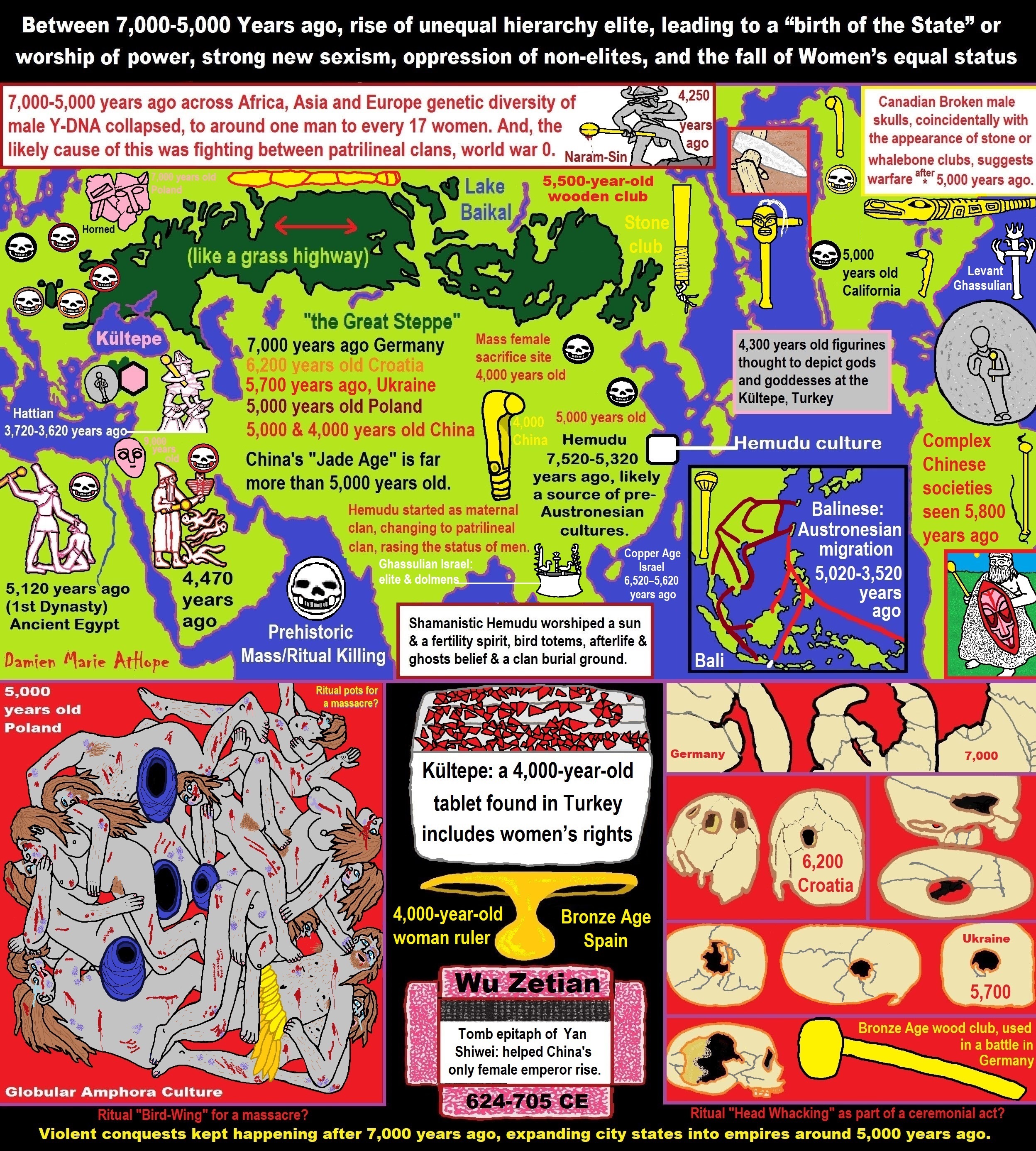
ref, ref, ref, ref, ref, ref, ref, ref, ref, ref, ref, ref, ref, ref, ref, ref, ref, ref, ref, ref, ref, ref, ref, ref, ref, ref, ref, ref, ref, ref, ref, ref, ref, ref, ref, ref, ref, ref, ref, ref, ref, ref, ref, ref, ref, ref, ref, ref, ref, ref, ref, ref, ref, ref, ref, ref, ref, ref, ref, ref, ref, ref, ref, ref, ref, ref, ref, ref, ref, ref, ref, ref, ref, ref, ref, ref, ref, ref, ref, ref, ref, ref, ref, ref, ref, ref, ref, ref, ref, ref
Look at this:
“Yeah. Socialism, CHINA GREAT, MAO FORCED ALL 500+ DIALECTS to LEARN 1, forced MANDRIN”
My response, Should we blame everyone capitalist, for being capitalist, or are people like Trump judged by their actions. You are ethical in your arguments? You must first follow the ethics of beliefs thus not post such fallacies as if reasonable. Who do you think you are talking to???
It is crazy, I say only, I support socialism and then the stupid people start talking shit. Lol
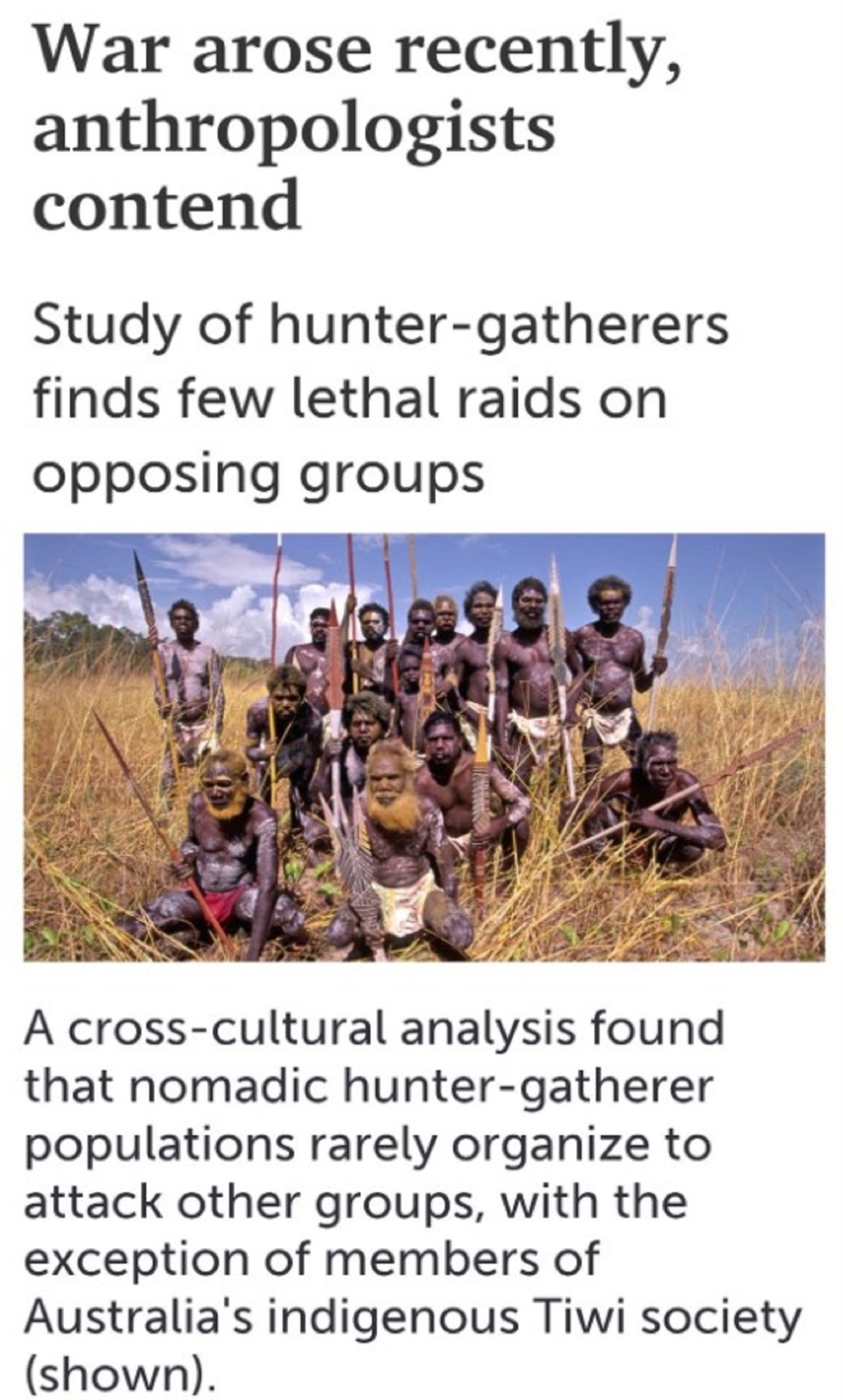
A battle has broken out among scientists trying to untangle the origins of war.
“The fighting is over whether hunter-gatherer communities in recent centuries have tended more toward war — defined as banding together in groups to kill people in other populations — than toward one-on-one attacks within their own communities. A second front has broken out over how to extrapolate from modern behavior to the Stone Age. Some anthropologists regard the nomadic groups as helpful if imperfect models of Stone Age human behavior. Others suspect that too much evolutionary change and irregular contact with outsiders make hunter-gatherers unreliable signposts of the past.” ref
“Lethal attacks on one community by another rarely occurred during the 19th and 20th centuries, according to a new analysis of data previously gathered from nomadic hunter-gatherer populations. Murders of one person by another in the same group accounted for a majority of intentionally caused deaths, anthropologists Douglas Fry and Patrik Söderberg of Åbo Akademi University in Vasa, Finland, report in the July 19 Science.” ref
“Ten of the hunter-gatherer groups had no recorded killings involving more than one attacker, effectively making those societies no-war zones, Fry and Söderberg say. The new evidence suggests that humans have evolved a tendency to avoid killing in general, the researchers contend. War originated only within the past 10,000 years, in their view, with armed conflicts intensifying as the first states expanded between 6,000 and 4,000 years ago.” ref
“Fry and Söderberg go against the popular tide in science … and win hands down,” says anthropologist R. Brian Ferguson of Rutgers University in Newark, N.J. Archaeological evidence from Europe, the Middle East, and western Asia contains relatively few signs of murder and war until after 10,000 years ago, he says.” ref
“But the new study has attracted fire from other investigators. “Fry and Söderberg use the hunter-gatherer record inappropriately to push the idea that because many modern hunter-gatherers were not seen to have war, ancestral hunter-gatherers also did not often have war,” says Harvard anthropologist Richard Wrangham.” ref
“Wrangham and others say that the new paper ignores relatively high homicide rates previously documented in hunter-gatherer groups, including some in the study. Critics also point to reports of regular fighting among neighboring hunter-gatherer communities; the groups that Fry and Söderberg studied were largely isolated. From critics’ perspective, war probably goes back tens of thousands of years and stoked the evolution of intense cooperation within, but not between, human groups.” ref
“Murders cause more deaths than war in both traditional and modern societies, with exceptions coming during the 20th century’s two world wars, says Harvard University psychologist Steven Pinker. Given war’s rarity, researchers are unlikely to observe raids and other attacks on rival groups when studying small hunter-gatherer samples such as those in the new study, he says. Rates of violent death are higher among hunter-gatherers and in other non-state societies than in state societies, he adds.” ref
“Fry and Söderberg’s finding that mobile hunter-gatherer bands infrequently organize warlike attacks does not surprise anthropologist Polly Wiessner of the University of Utah. But raiding and war does take place in a few such groups, as well as among sedentary hunter-gatherers that live year-round in bountiful settings near coasts or rivers. The great unanswered question, Wiessner says, concerns “how different societies harnessed and tamed aggression to build larger societies throughout human evolution.” ref
“Fry and Söderberg identified data on 148 killings in 21 mobile hunter-gatherer groups. Just over half of those killings were committed by lone perpetrators. Almost two-thirds resulted from disputes within families, executions of group members, competition among men over women, and other conflicts within groups. About one-third of killings involved attacks by one group on another. Reasons included disputes over resources, thefts of women, and revenge attacks for past stealing or other offenses.” ref
“Australia’s Tiwi had an exceptionally large number of killings, 69, and accounted for most of the lethal attacks across groups. Economist Samuel Bowles of New Mexico’s Santa Fe Institute criticizes Fry and Söderberg for choosing relatively peaceful groups, including the Tiwi, that mostly live in places where state-run armies discourage intergroup conflict. In his 2009 analysis of eight hunter-gatherer societies, the Tiwi ranked near the bottom in estimated rates of war-related deaths. None of the other seven groups he studied were part of Fry and Söderberg’s work.” ref
“A handful of reports have likewise found fairly regular, usually low-level warfare among neighboring hunter-gatherer societies, Wrangham says. In those cases, hunter-gatherers had little or no contact with more powerful farming communities that could have discouraged fighting. Warring groups had different customs and spoke different languages or dialects. Fry and Söderberg mainly addressed conflicts between bands of hunter-gatherers with common customs and languages, which reveal little about the evolution of war, Wrangham contends.” ref
“Wrangham considers periodically warring hunter-gatherer groups to be the best available models of Stone Age practices. In a 2012 paper, he and a colleague proposed that ancient people in groups such as these evolved a tendency for males to band together and opportunistically kill members of rival groups — much as chimpanzees do.” ref
All 690 pages of this volume on the barrows of Petersfield Heath #Hampshire are now free to read online. From a quick look through, it seems packed with innovative maps, visualizations, charts, lidar analysis as well as more standard reports. #Archaeology https://sidestone.com/books/barrows-at-the-core-of-bronze-age-communities… https://pic.twitter.com/032GNGQNXs
How easy, we too often, allow words of hate, to slip from our mouths and into our hearts.
I often struggle for a better world but it is hard when hate is more motivating than love… Shamefully, the world thrives on bigotry and it needs to stop, no matter what style of society it is wrong.
I like learning prehistory! I also hate: Pseudo-science, Pseudo-history, and Pseudo-morality. So yeah, history is fun, but one must weed through the sometimes added mythology, half-truths, or outright lies. This is even more important when reading religion-related information.
The greatest lie ever, was the fraud of democracy, from its conceptions in Greece, claiming the freedom to vote, all the while upholding the institution of slavery. We today are sold the lie of capitalism, and the elite that play in space, while children starve in the streets…
The sad history of democracy is one of continued bigotry of elites and slaves, but now with a happy face or less unhappy faces, I should say, for more accuracy, as some non-slaves were a little more equal in a limited kind of way and/or scope.
If Americanism has taught us anything, it is that this “land” (people claiming colonialism as a birthright) loves bigotry, hate, lying, violence, denial, and unscientific explanations to just about any damn thing that can’t get away fast enough.
When was the last time you held yourself accountable for saying or doing something bigoted? If you were taken to Court could you be found guilty of a life lived in love? What is stopping you now from making yourself a better YOU?
I long for the day of a class-free world, and thus, a freer humanity.


While hallucinogens are associated with shamanism, it is alcohol that is associated with paganism.
The Atheist-Humanist-Leftist Revolutionaries Shows in the prehistory series:
Show two: Pre-animism 300,000 years old and animism 100,000 years old: related to “Anarchism and Socialism”
Show tree: Totemism 50,000 years old: related to “Anarchism and Socialism”
Show four: Shamanism 30,000 years old: related to “Anarchism and Socialism”
Show five: Paganism 12,000 years old: related to “Anarchism and Socialism”
Show six: Emergence of hierarchy, sexism, slavery, and the new male god dominance: Paganism 7,000-5,000 years old: related to “Anarchism and Socialism” (Capitalism) (World War 0) Elite and their slaves!
Prehistory: related to “Anarchism and Socialism” the division of labor, power, rights, and recourses: VIDEO
Pre-animism 300,000 years old and animism 100,000 years old: related to “Anarchism and Socialism”: VIDEO
Totemism 50,000 years old: related to “Anarchism and Socialism”: VIDEO
Shamanism 30,000 years old: related to “Anarchism and Socialism”: VIDEO
Paganism 12,000 years old: related to “Anarchism and Socialism” (Pre-Capitalism): VIDEO
Paganism 7,000-5,000 years old: related to “Anarchism and Socialism” (Capitalism) (World War 0) Elite and their slaves: VIEDO
Paganism 5,000 years old: progressed organized religion and the state: related to “Anarchism and Socialism” (Kings and the Rise of the State): VIEDO
Paganism 4,000 years old: related to “Anarchism and Socialism” (First Moralistic gods, then the Origin time of Monotheism): VIEDO
I do not hate simply because I challenge and expose myths or lies any more than others being thought of as loving simply because of the protection and hiding from challenge their favored myths or lies.
The truth is best championed in the sunlight of challenge.
An archaeologist once said to me “Damien religion and culture are very different”
My response, So are you saying that was always that way, such as would you say Native Americans’ cultures are separate from their religions? And do you think it always was the way you believe?
I had said that religion was a cultural product. That is still how I see it and there are other archaeologists that think close to me as well. Gods too are the myths of cultures that did not understand science or the world around them, seeing magic/supernatural everywhere.
I personally think there is a goddess and not enough evidence to support a male god at Çatalhöyük but if there was both a male and female god and goddess then I know the kind of gods they were like Proto-Indo-European mythology.
This series idea was addressed in, Anarchist Teaching as Free Public Education or Free Education in the Public: VIDEO
Our 12 video series: Organized Oppression: Mesopotamian State Force and the Politics of power (9,000-4,000 years ago), is adapted from: The Complete and Concise History of the Sumerians and Early Bronze Age Mesopotamia (7000-2000 BC): https://www.youtube.com/watch?v=szFjxmY7jQA by “History with Cy“
Show #1: Mesopotamian State Force and the Politics of Power (Samarra, Halaf, Ubaid)
Show #2: Mesopotamian State Force and the Politics of Power (Eridu “Tell Abu Shahrain”)
Show #3: Mesopotamian State Force and the Politics of Power (Uruk and the First Cities)
Show #4: Mesopotamian State Force and the Politics of Power (First Kings)
Show #5: Mesopotamian State Force and the Politics of Power (Early Dynastic Period)
Show #6: Mesopotamian State Force and the Politics of Power (King/Ruler Lugalzagesi)
Show #7: Mesopotamian State Force and the Politics of Power (Sargon and Akkadian Rule)
Show #9: Mesopotamian State Force and the Politics of Power (Gudea of Lagash and Utu-hegal)
Show #12: Mesopotamian State Force and the Politics of Power (Aftermath and Legacy of Sumer)

The “Atheist-Humanist-Leftist Revolutionaries”
Cory Johnston ☭ Ⓐ Atheist Leftist @Skepticallefty & I (Damien Marie AtHope) @AthopeMarie (my YouTube & related blog) are working jointly in atheist, antitheist, antireligionist, antifascist, anarchist, socialist, and humanist endeavors in our videos together, generally, every other Saturday.
Why Does Power Bring Responsibility?
Think, how often is it the powerless that start wars, oppress others, or commit genocide? So, I guess the question is to us all, to ask, how can power not carry responsibility in a humanity concept? I know I see the deep ethical responsibility that if there is power their must be a humanistic responsibility of ethical and empathic stewardship of that power. Will I be brave enough to be kind? Will I possess enough courage to be compassionate? Will my valor reach its height of empathy? I as everyone, earns our justified respect by our actions, that are good, ethical, just, protecting, and kind. Do I have enough self-respect to put my love for humanity’s flushing, over being brought down by some of its bad actors? May we all be the ones doing good actions in the world, to help human flourishing.
I create the world I want to live in, striving for flourishing. Which is not a place but a positive potential involvement and promotion; a life of humanist goal precision. To master oneself, also means mastering positive prosocial behaviors needed for human flourishing. I may have lost a god myth as an atheist, but I am happy to tell you, my friend, it is exactly because of that, leaving the mental terrorizer, god belief, that I truly regained my connected ethical as well as kind humanity.
Cory and I will talk about prehistory and theism, addressing the relevance to atheism, anarchism, and socialism.
At the same time as the rise of the male god, 7,000 years ago, there was also the very time there was the rise of violence, war, and clans to kingdoms, then empires, then states. It is all connected back to 7,000 years ago, and it moved across the world.
Cory Johnston: https://damienmarieathope.com/2021/04/cory-johnston-mind-of-a-skeptical-leftist/?v=32aec8db952d
The Mind of a Skeptical Leftist (YouTube)
Cory Johnston: Mind of a Skeptical Leftist @Skepticallefty
The Mind of a Skeptical Leftist By Cory Johnston: “Promoting critical thinking, social justice, and left-wing politics by covering current events and talking to a variety of people. Cory Johnston has been thoughtfully talking to people and attempting to promote critical thinking, social justice, and left-wing politics.” http://anchor.fm/skepticalleft
Cory needs our support. We rise by helping each other.
Cory Johnston ☭ Ⓐ @Skepticallefty Evidence-based atheist leftist (he/him) Producer, host, and co-host of 4 podcasts @skeptarchy @skpoliticspod and @AthopeMarie
Damien Marie AtHope (“At Hope”) Axiological Atheist, Anti-theist, Anti-religionist, Secular Humanist. Rationalist, Writer, Artist, Poet, Philosopher, Advocate, Activist, Psychology, and Armchair Archaeology/Anthropology/Historian.
Damien is interested in: Freedom, Liberty, Justice, Equality, Ethics, Humanism, Science, Atheism, Antiteism, Antireligionism, Ignosticism, Left-Libertarianism, Anarchism, Socialism, Mutualism, Axiology, Metaphysics, LGBTQI, Philosophy, Advocacy, Activism, Mental Health, Psychology, Archaeology, Social Work, Sexual Rights, Marriage Rights, Woman’s Rights, Gender Rights, Child Rights, Secular Rights, Race Equality, Ageism/Disability Equality, Etc. And a far-leftist, “Anarcho-Humanist.”
With religion, it is like your brain is in a noose, squeezing out any hope of critical thinking about religious beliefs. Leaving the victim faith-drunk as if all the oxygen of their mental freedom is cut off and hope for self-mastery is but some far away fantasy out of reach.
My Thought on the Evolution of Gods?
Animal protector deities from old totems/spirit animal beliefs come first to me, 13,000/12,000 years ago, then women as deities 11,000/10,000 years ago, then male gods around 7,000/8,000 years ago. Moralistic gods around 5,000/4,000 years ago, and monotheistic gods around 4,000/3,000 years ago.

Damien Marie AtHope’s Art
Damien Marie AtHope (Said as “At” “Hope”)/(Autodidact Polymath but not good at math):
Axiological Atheist, Anti-theist, Anti-religionist, Secular Humanist, Rationalist, Writer, Artist, Jeweler, Poet, “autodidact” Philosopher, schooled in Psychology, and “autodidact” Armchair Archaeology/Anthropology/Pre-Historian (Knowledgeable in the range of: 1 million to 5,000/4,000 years ago). I am an anarchist socialist politically. Reasons for or Types of Atheism
My Website, My Blog, & Short-writing or Quotes, My YouTube, Twitter: @AthopeMarie, and My Email: damien.marie.athope@gmail.com




